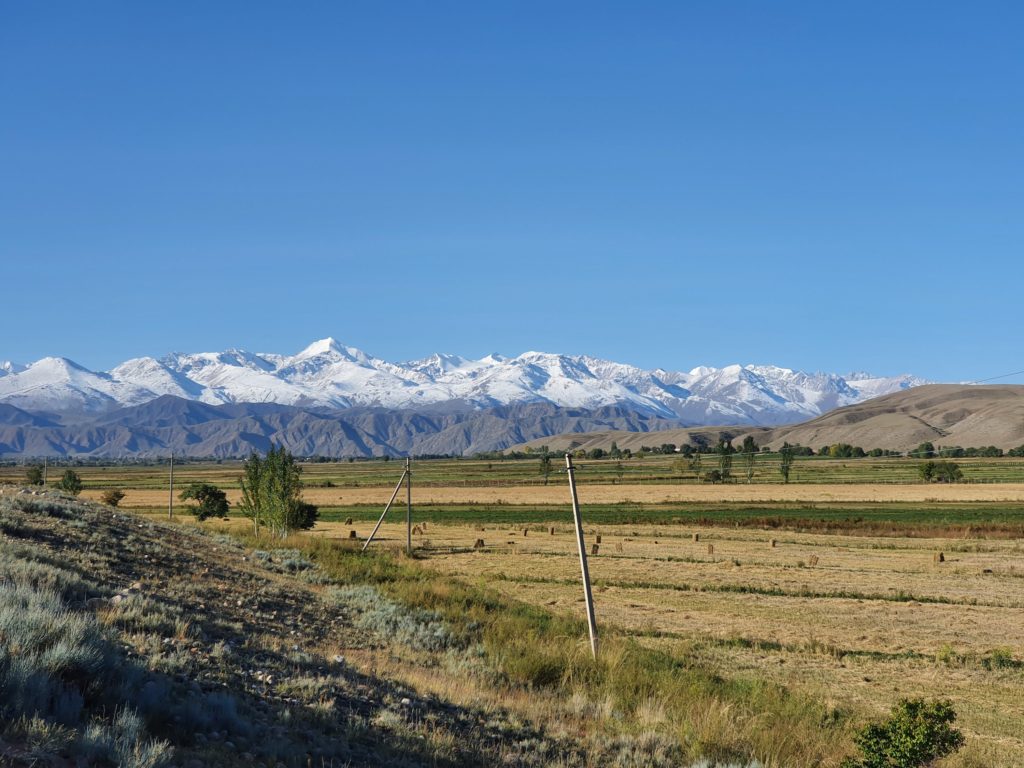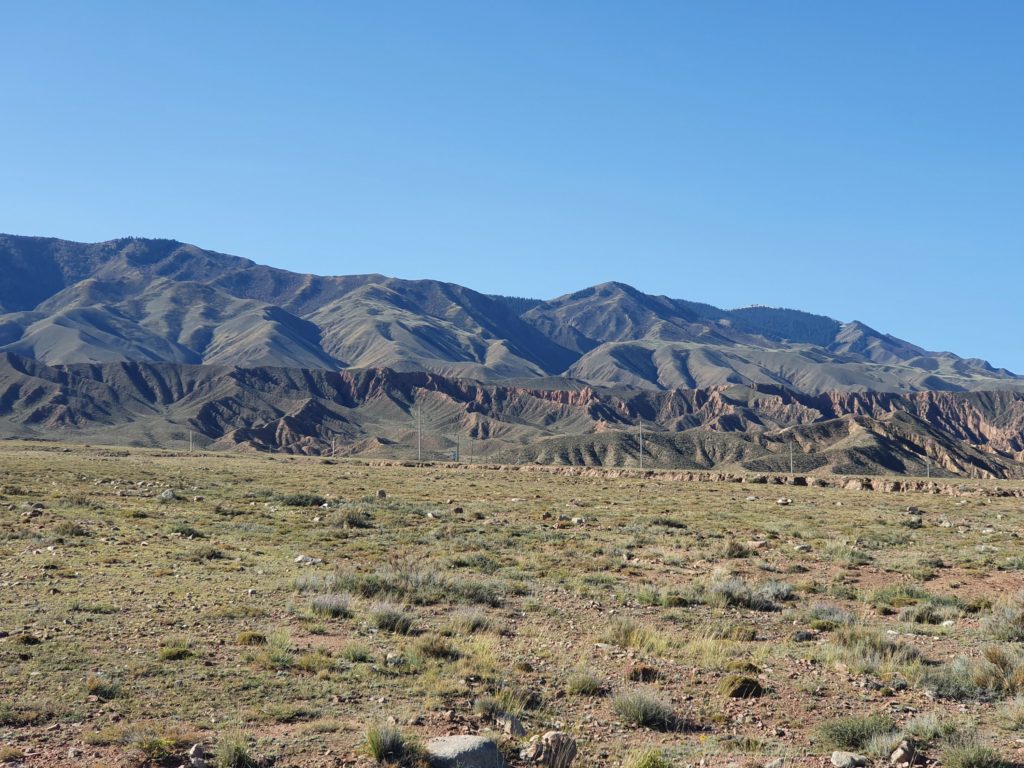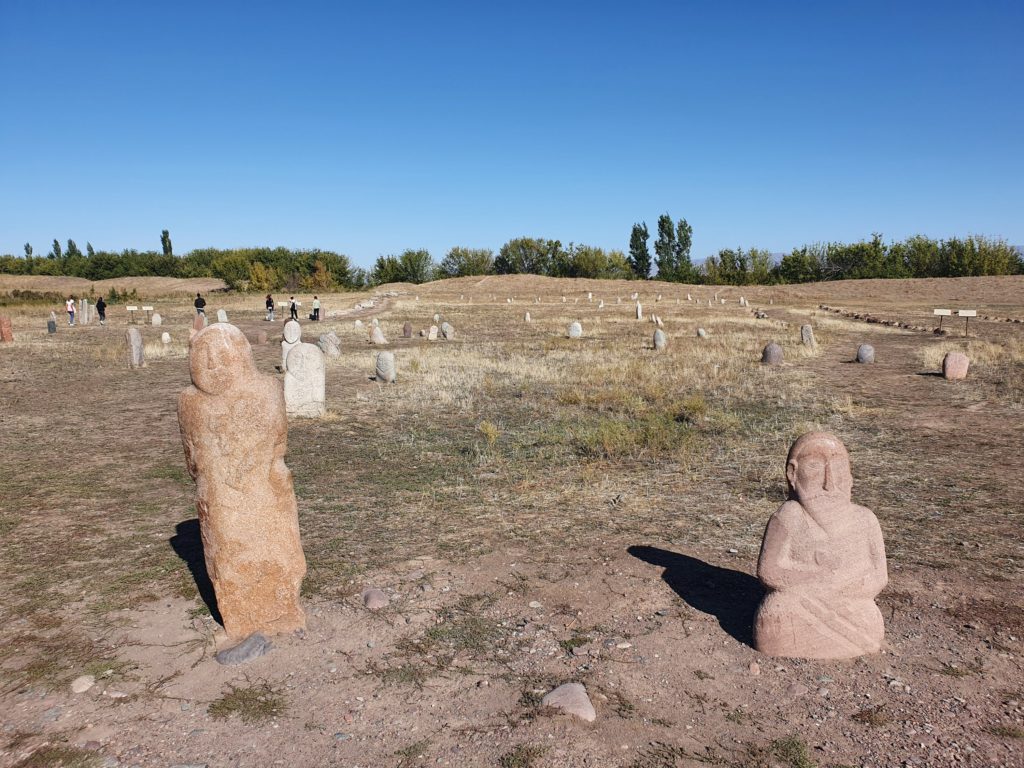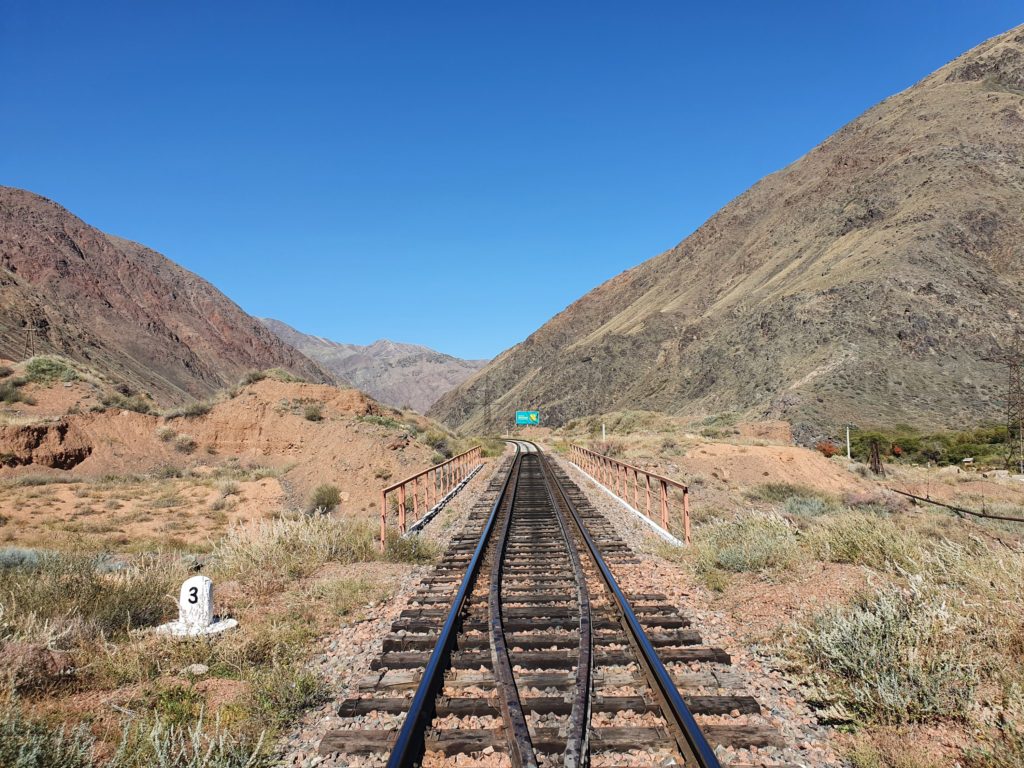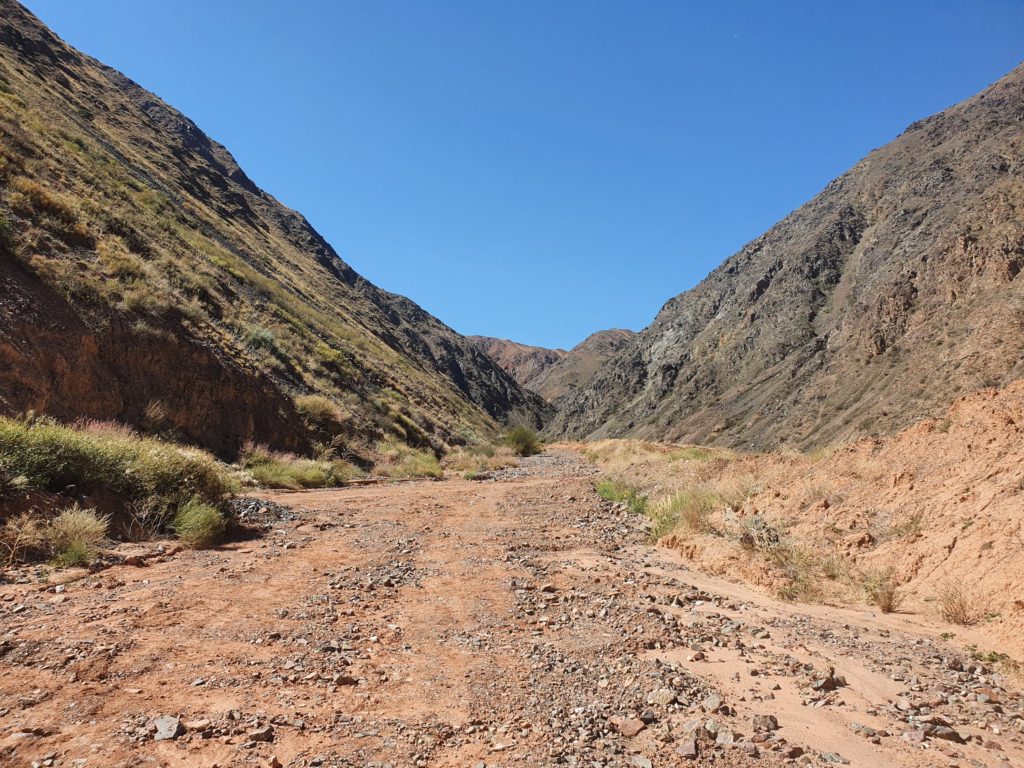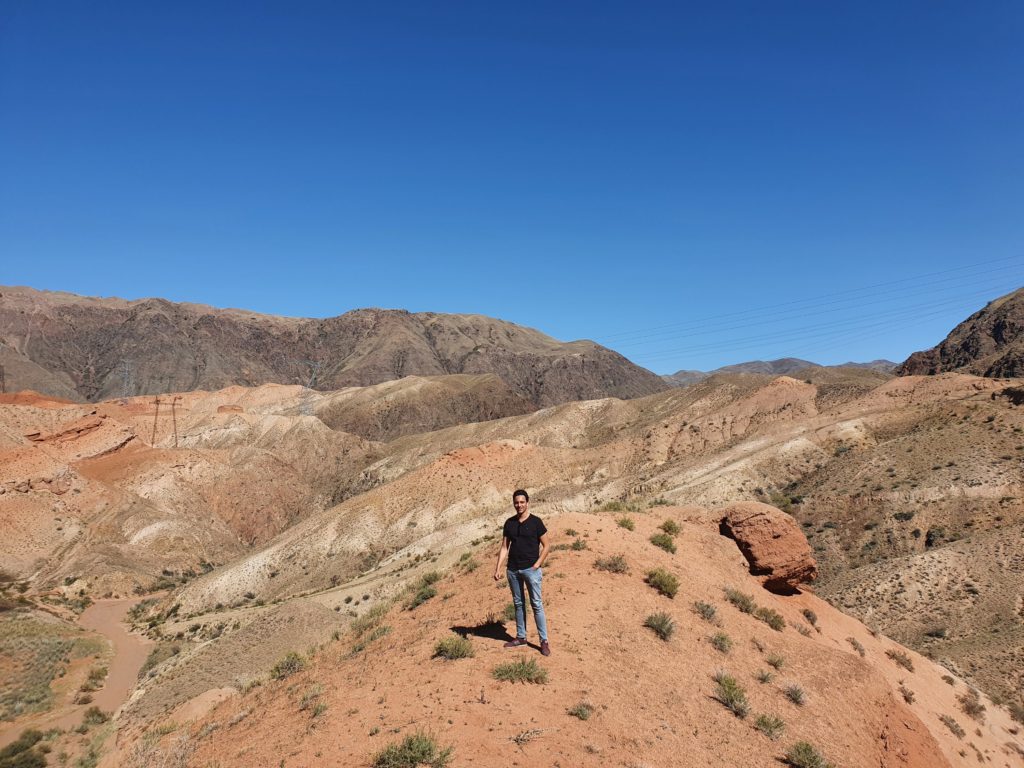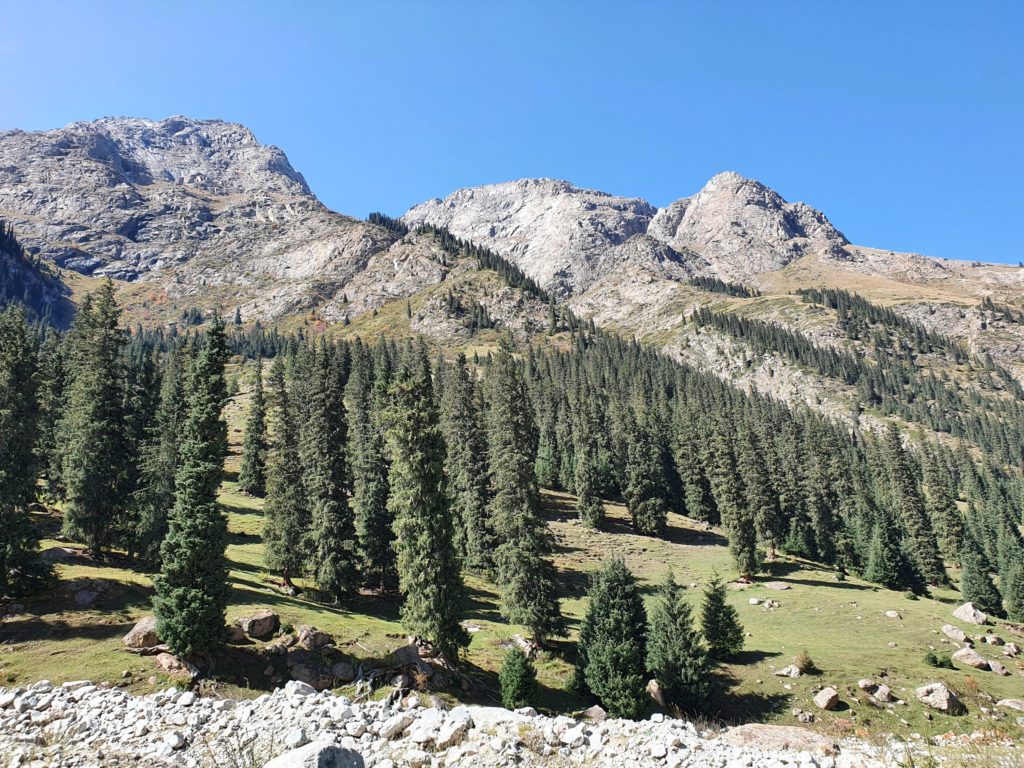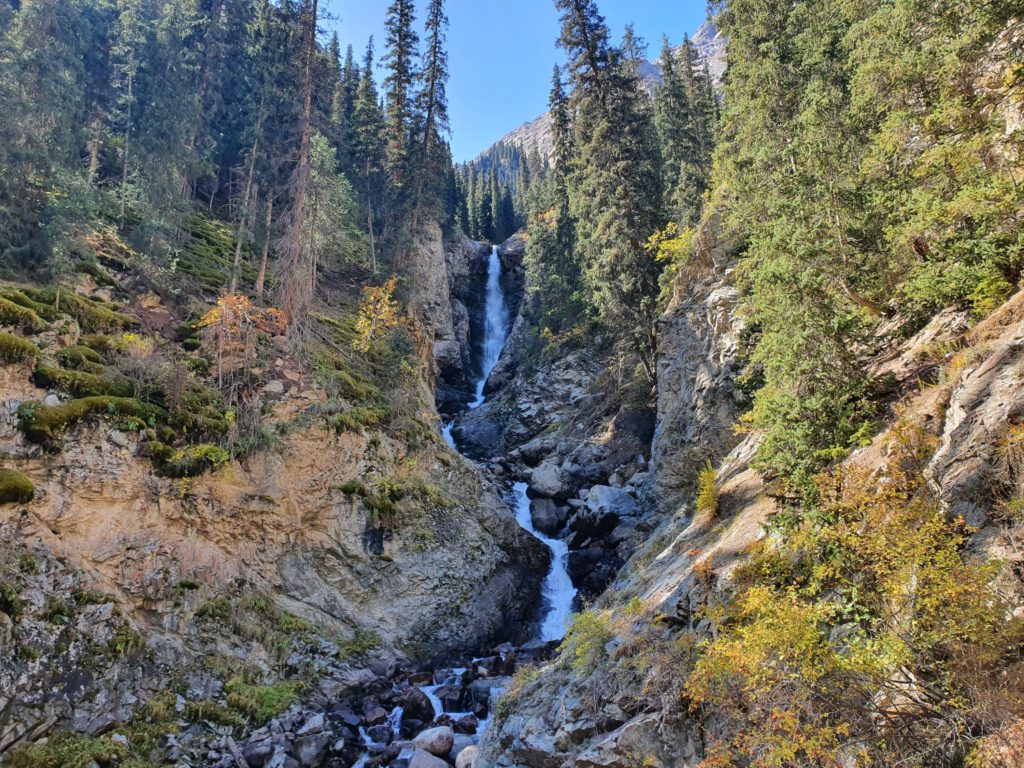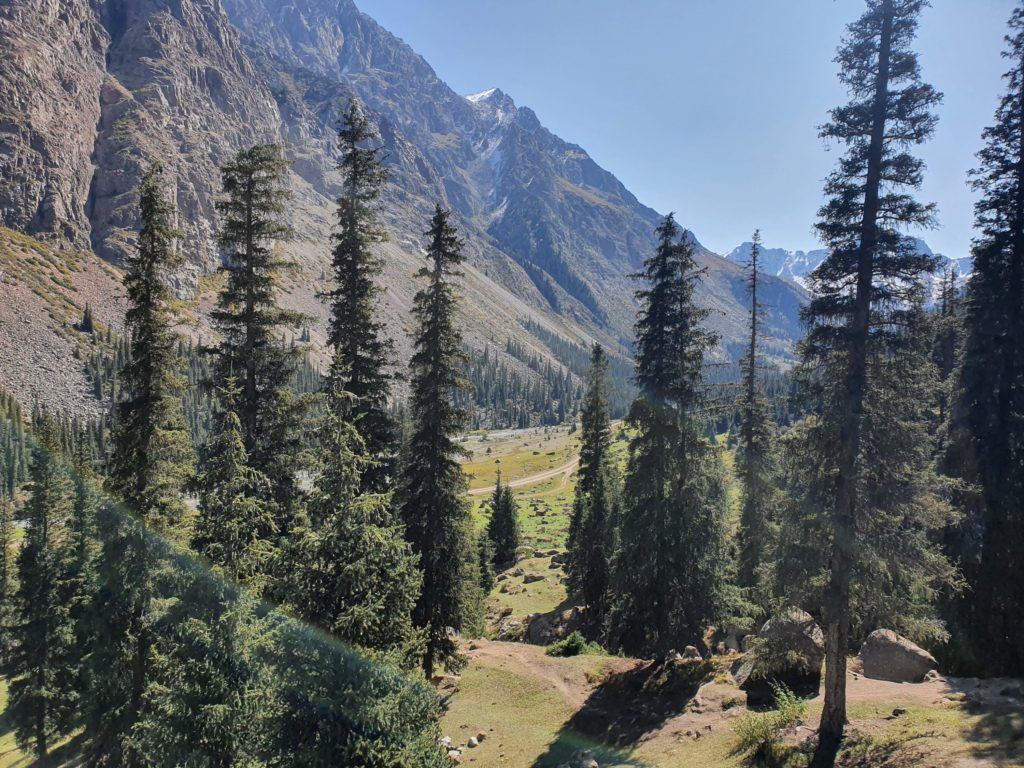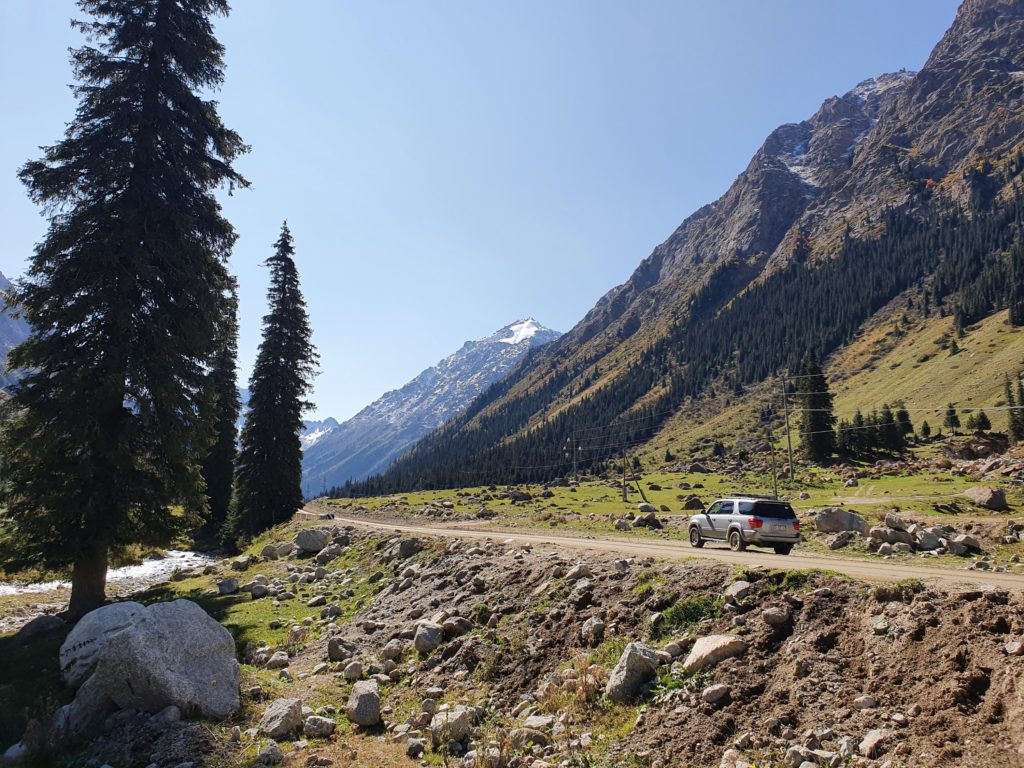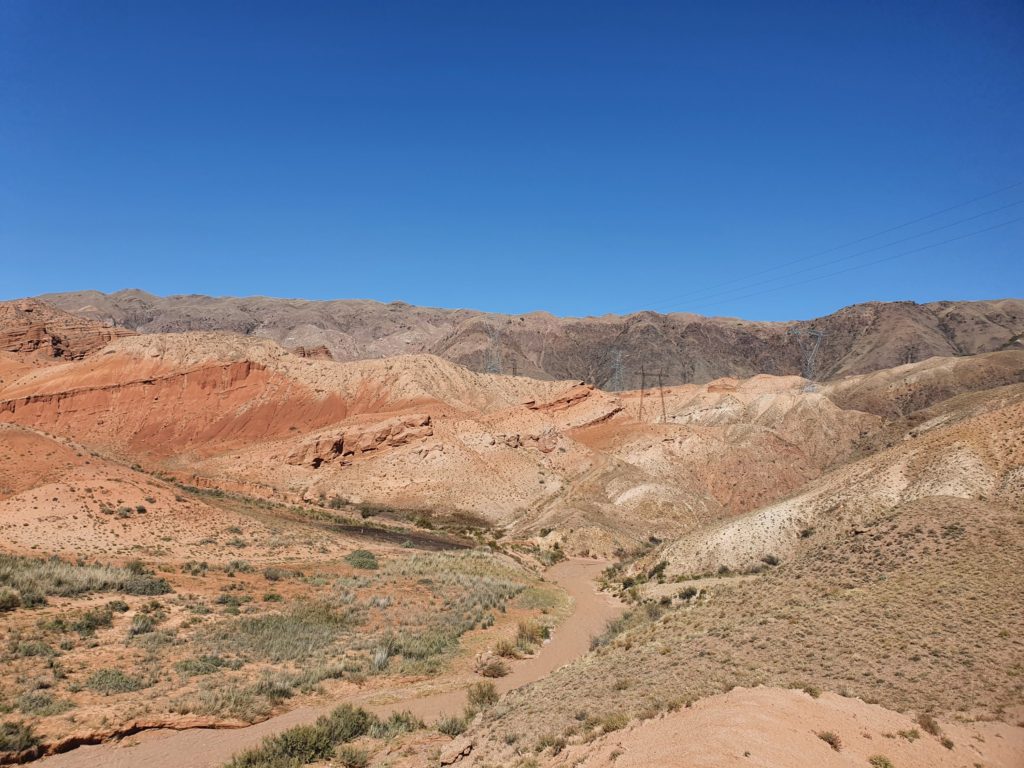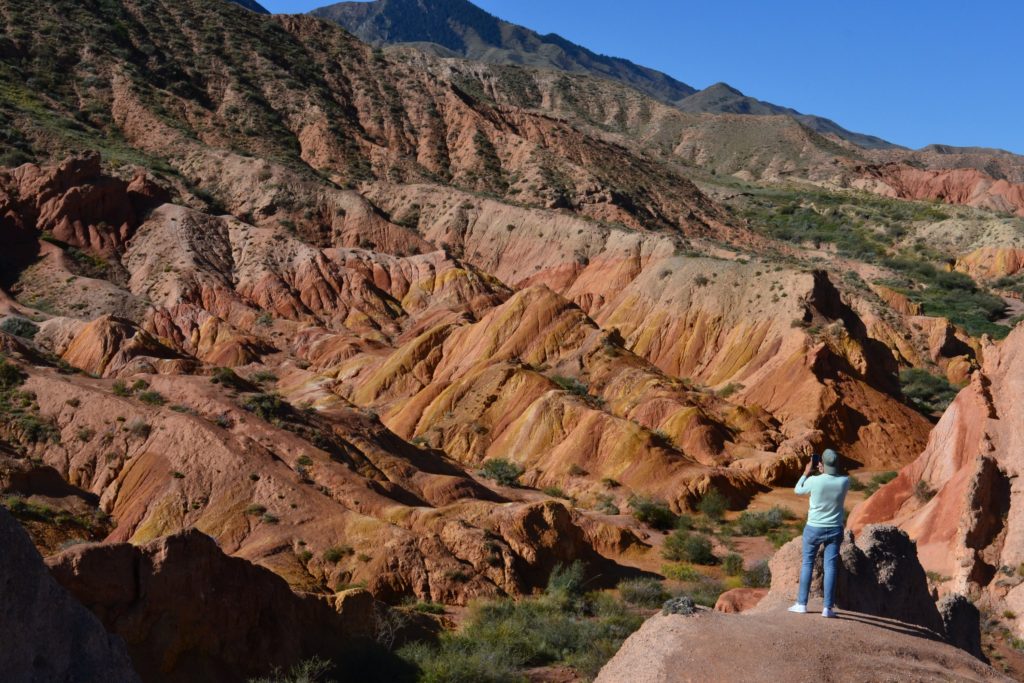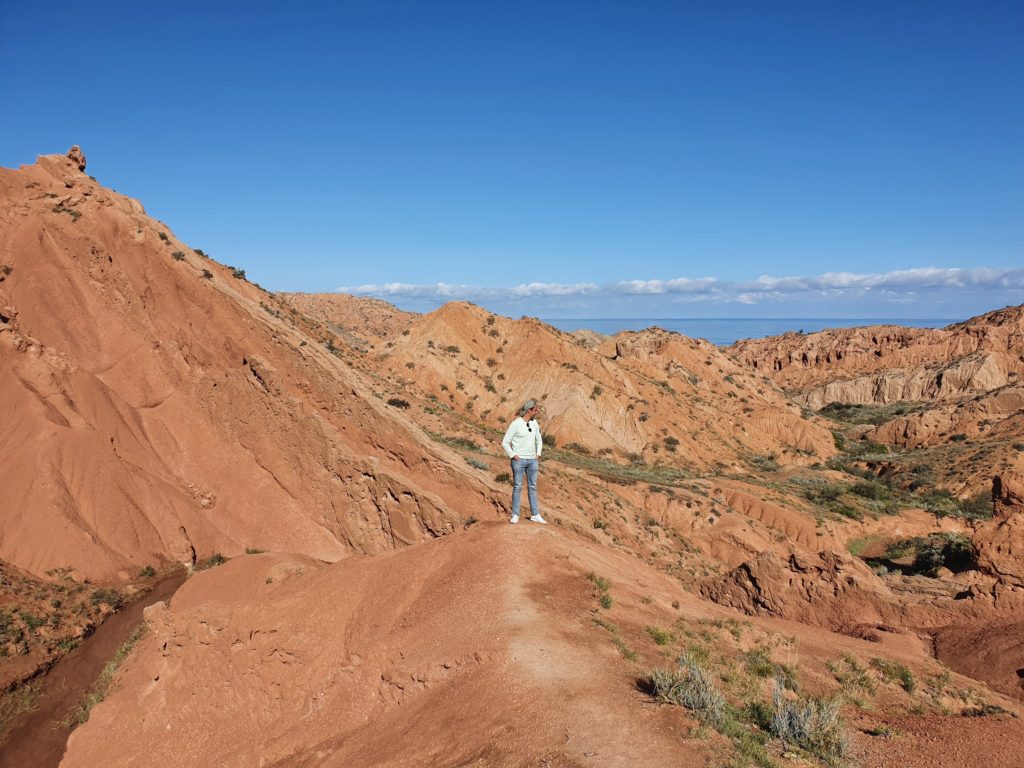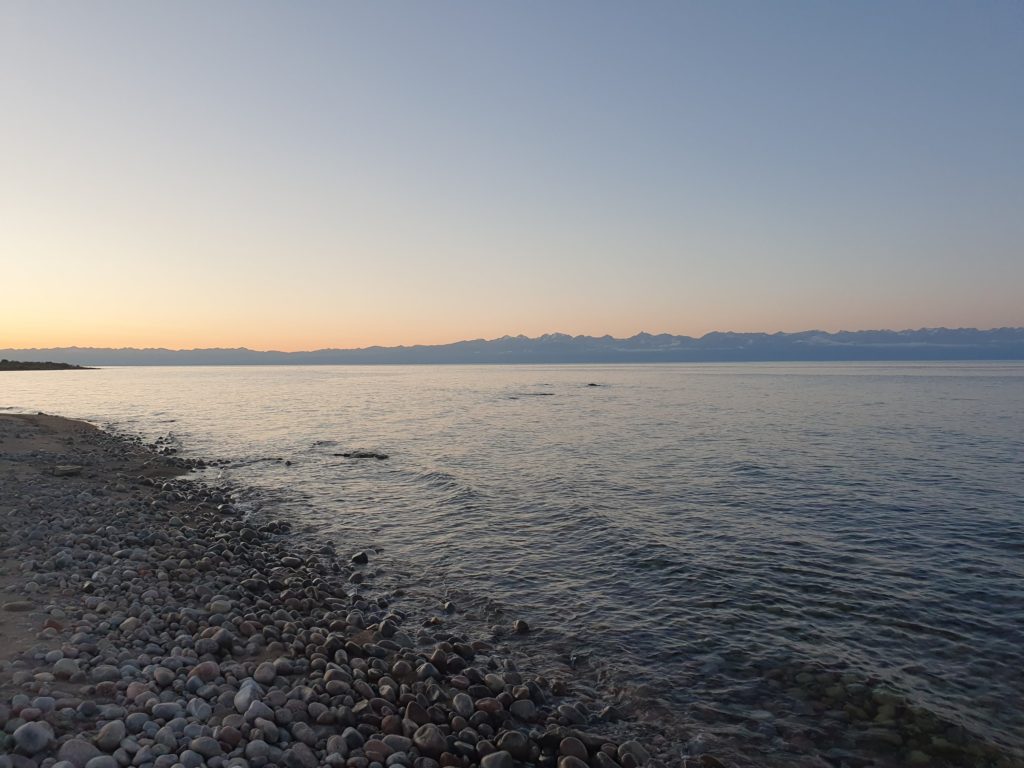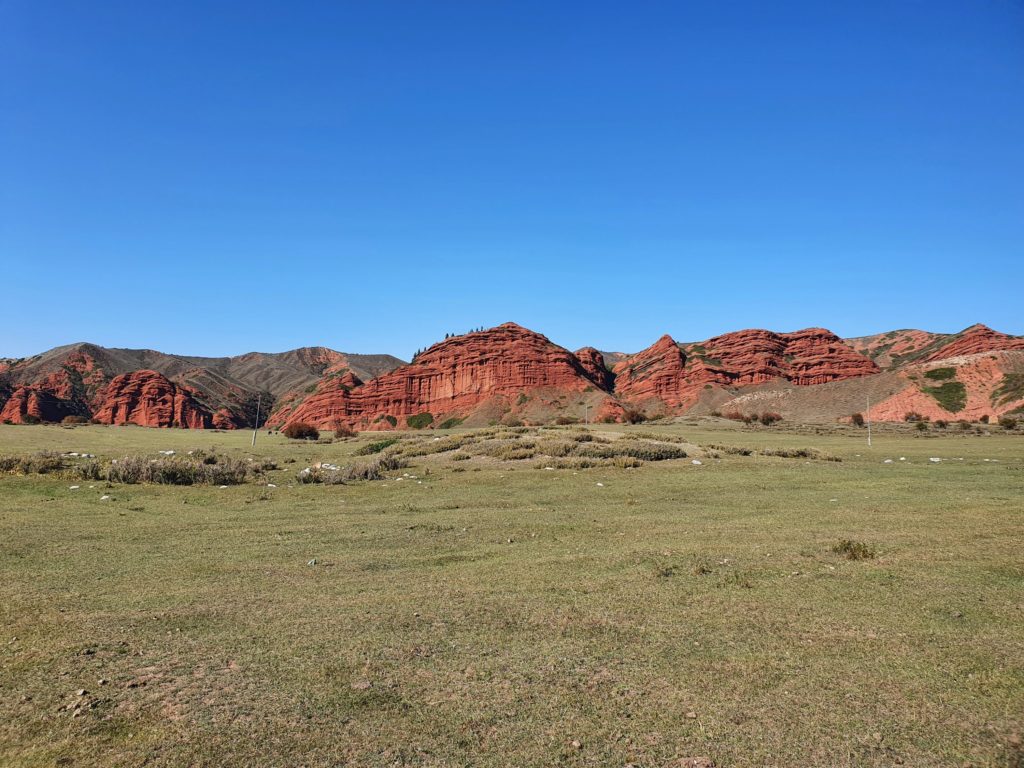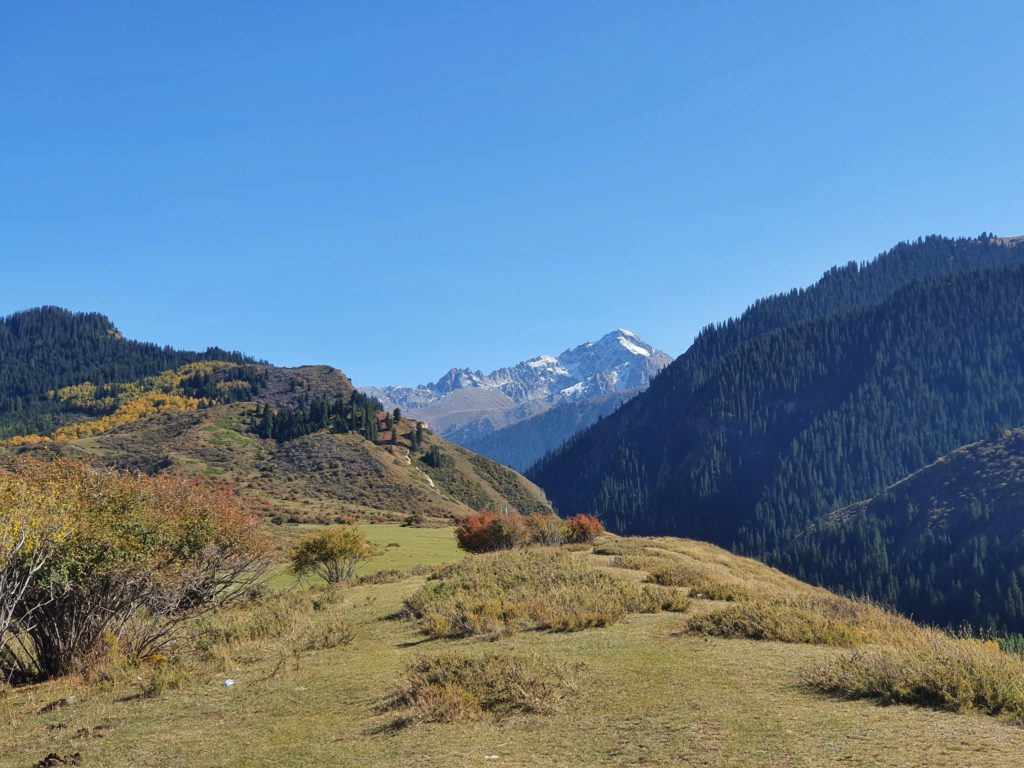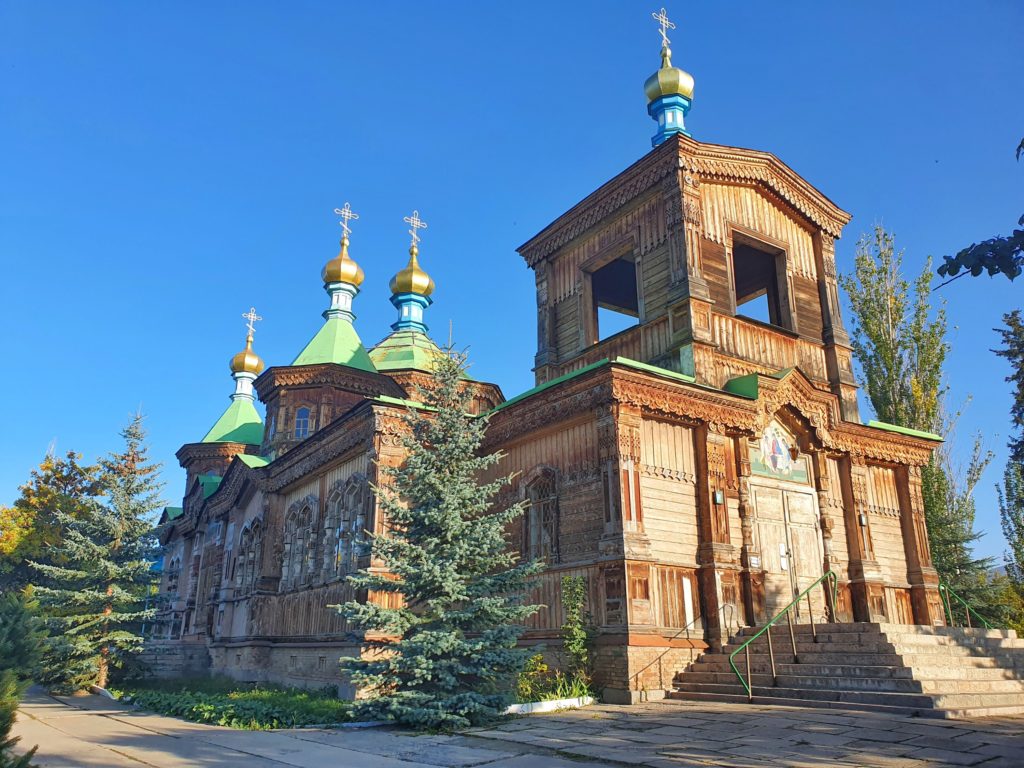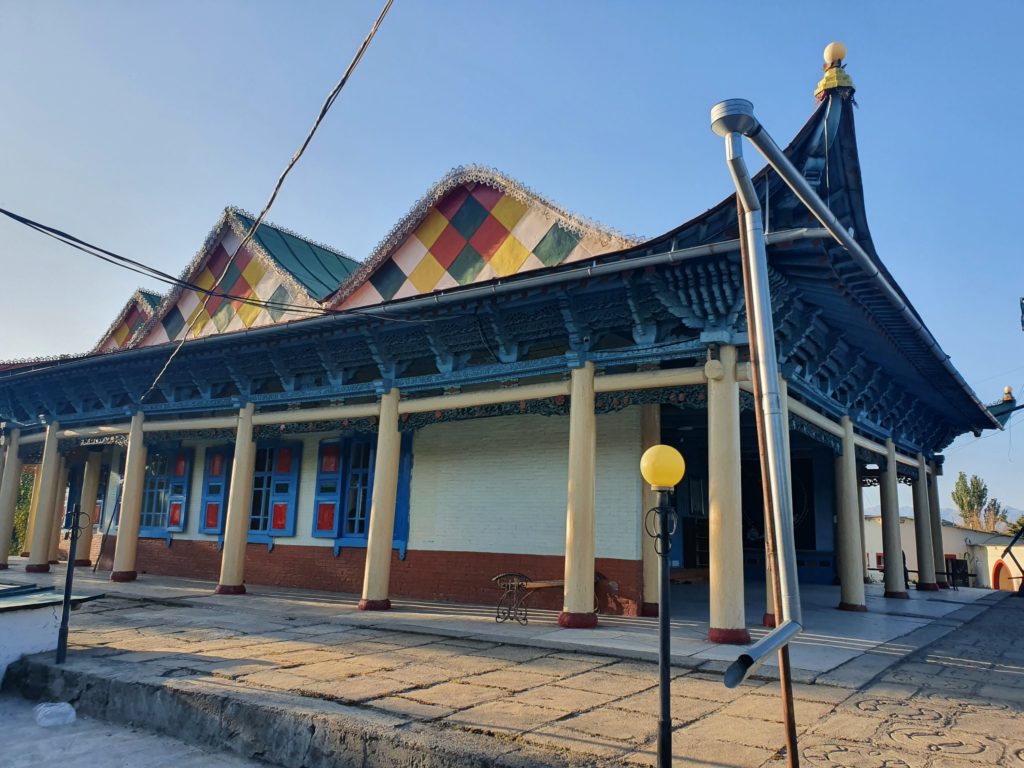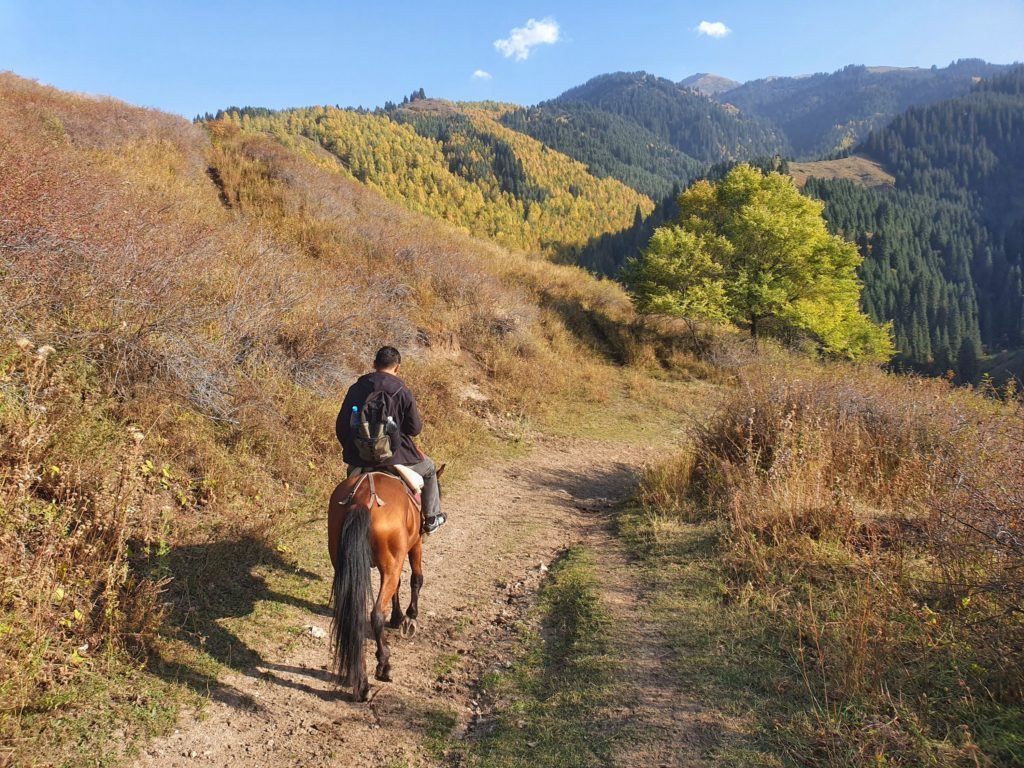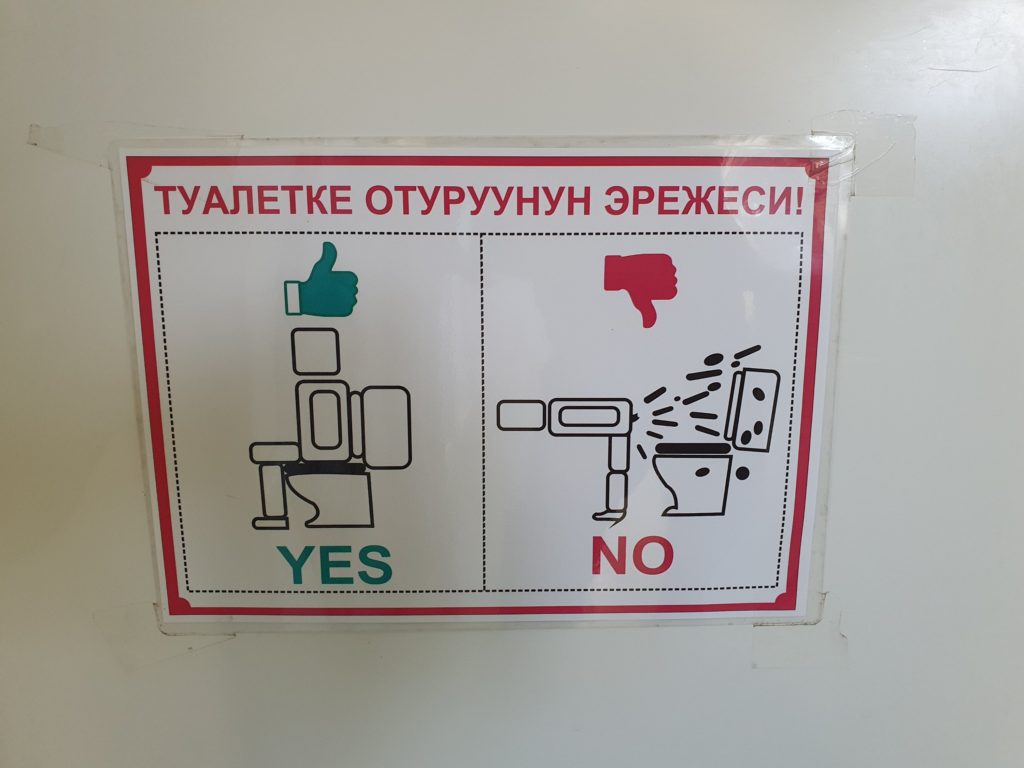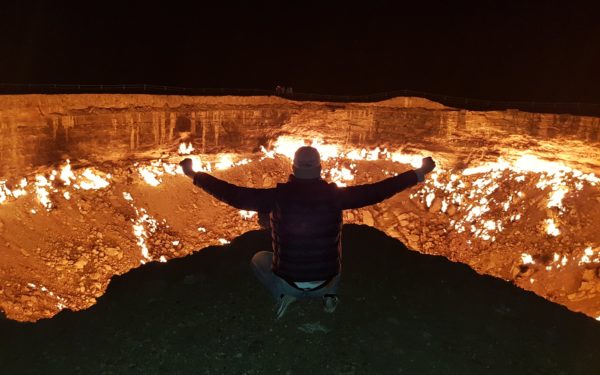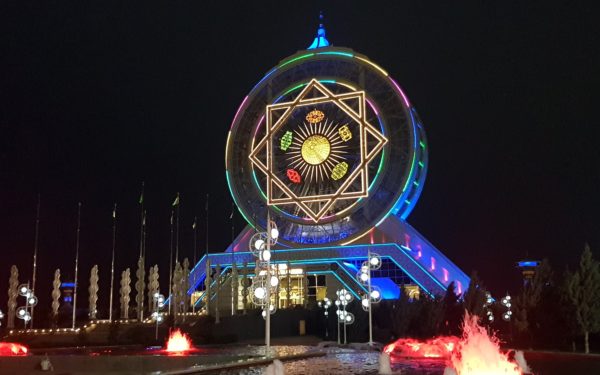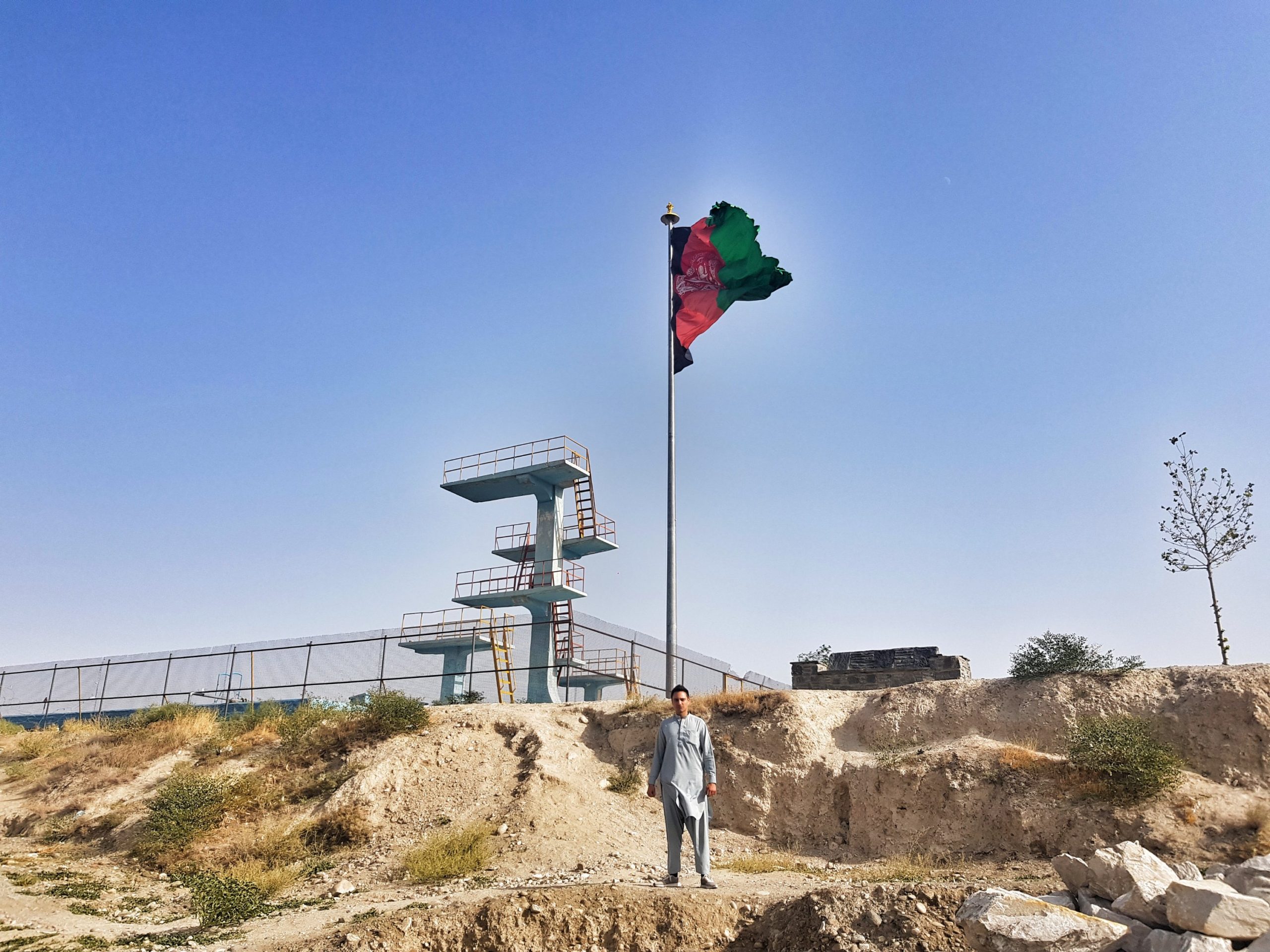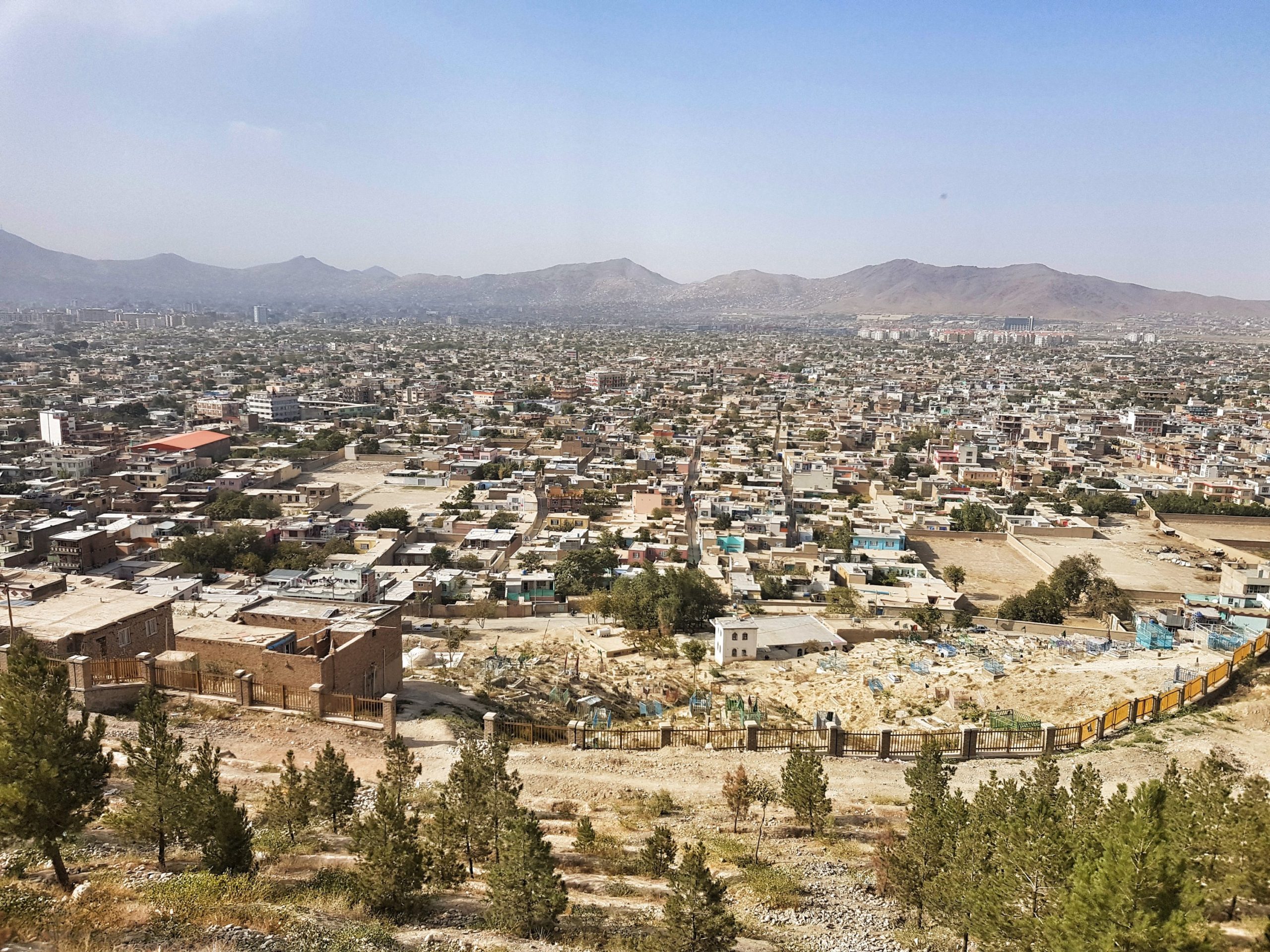Trip Report: Kyrgyzstan
Visited in September 2020
Already a few hours after my arrival, I knew that country number 107 was going to be fun.
I was sitting in a nice steakhouse in Bishkek. Apart from me, no other guest was present. Nobody in this country would spend the completely crazy price of 20 dollars for a steak, the waiter told me. The only ones who would do that were employees of international companies and tourists. Due to the pandemic, none of the second category had been seen in the country in the past few months.
The (allegedly overpriced) steak tasted great and was exactly what I needed after this long journey (including a 12-hour overnight stopover in Istanbul). Besides, the waiter was a good chat partner and told me a few interesting stories about his country. Everything was quite easy and relaxed, until he suddenly started to hastily mop the floor and clean up the place.
He told me to take my time but he urgently needed to go home. His father had just called him. The old man was heavily drunk and had an argument with their neighbors. On the phone his father ordered him to come home so they could beat them up together…
Although the waiter assured me that he would calm down his father at home, it would have been quite interesting to witness the further course of this story. In any case, it was a good opener for a crazy country I would call home for the next four nights. Welcome to Kyrgyzstan!
Kyrgyz…what?
So, where did I just land?
To say that Kyrgyzstan is more of an off the beaten path destination would be an understatement. Some people I told about Kyrgyzstan first had to look at Google Maps to find out the country’s location. Therefore, here is a short introduction.
Kyrgyzstan is a landlocked country in Central Asia, bordering Kazakhstan, Uzbekistan, Tajikistan and China. It is about half the size of Germany and has a population of just over 6 million. The capital is called Bishkek and the currency is called Som.
The Kyrgyz are Turkic peoples and speak a language similar to Turkish. The second official language is Russian, because Kyrgyzstan was part of the Soviet Union. So it is not surprising that people of Russian descent make up a not so small minority in the population. You will also witness Chinese influences in the country, be it in food or sometimes even in architecture. The Dungan Mosque in Karakol is a good example.
Apart from this cultural mix, Kyrgyzstan has landscapes that could just as well be in Switzerland, New Zealand or Canada. Kyrgyzstan is a mountainous country. Depending on the source, the mountains occupy 80-95% of the country’s area and the highest mountain, Jengish Chokusu, is 7,439 meters high. In addition, there are forests, lakes, rivers with crystal-clear water, glaciers and thousands of cows, horses, sheep and so on.
For this reason, Kyrgyzstan is primarily an outdoor adventure destination, consisting of trekking, horseback riding, skiing or sleeping in yurts together with nomadic families. Due to my rather limited time in the country, multi-day trekking was out of the question and the ski season has not yet started (not that I have seriously considered it). Instead, my plan was to see as much as possible in the short time available. One route was perfect for this purpose…
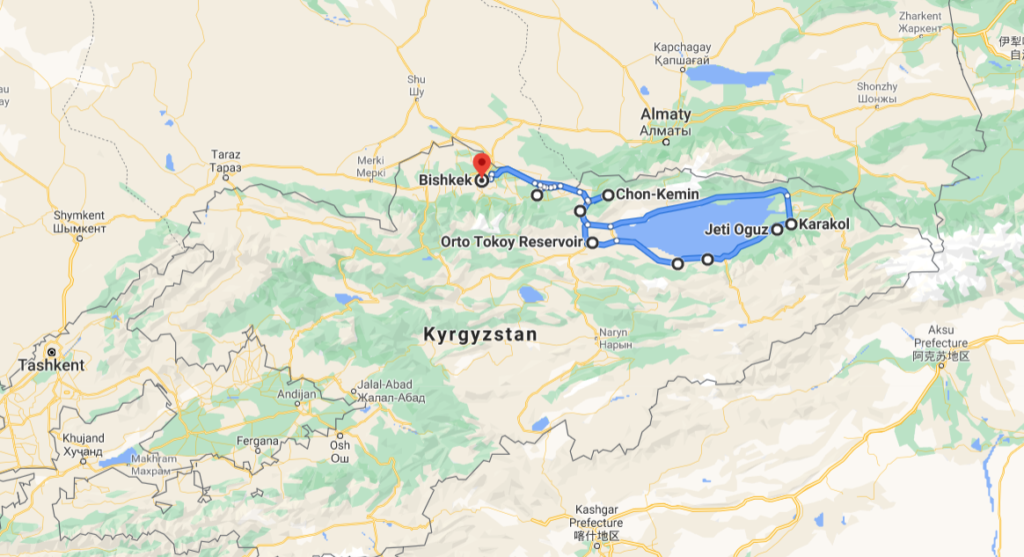
Although Kyrgyzstan is a landlocked country, you can still find beaches there, namely at Lake Issyk-kul. This is the 25th largest lake in the world and the second largest high-altitude lake (behind Titicaca in Peru and Bolivia). With a depth of 668, the lake is also the 7th deepest in the world.
This lake was the center of my trip, because my journey led me from the capital around the lake and back again.
Bishkek to Issyk-kul
My guide Narynbek from Kyrgyz Guides, a humorous and educated fellow, only four days younger than me, picked me up at my hotel at 8am on my second day. With him together I would spend the next 72 hours in Kyrgyzstan.
I booked this trip at super-short notice, more precisely three days before my departure. Then, I contacted about three or four tour operators in Kyrgyzstan and Narynbek was the only one who had replied to my e-mail. So my guide was basically determined before I had to take a detailed look at the different companies. But that was more than okay, because Narynbek turned out to be an excellent guide and I got along very well with him.
This day was supposed to be a long day in the car, as we drove from the capital to the rural part of Kyrgyzstan, namely a village called Bokonbayevo on the south coast of Lake Issyk-kul. However, even the capital city Bishkek felt a bit rural because of the mostly visible mountain range behind the buildings. Unfortunately, this 15-minute drive out of the city was the only time I saw Bishkek during daylight. The city seems to be strongly influenced by Soviet times. So I saw many statues, an oversized square, panel constructions and other legacies of the Soviet era.
The Kyrgyz roads were better than I expected. Although there are potholes around Lake Issyk-kul from time to time, the journey was generally much pleasant. Plus, what I saw on that road trip was hard to beat in terms of beauty. Already in Bishkek I got a first preview of the nature of Kyrgyzstan. But the true magnificence of the country comes out when you leave the capital and drive between two mountain ranges to Lake Issyk-kul.
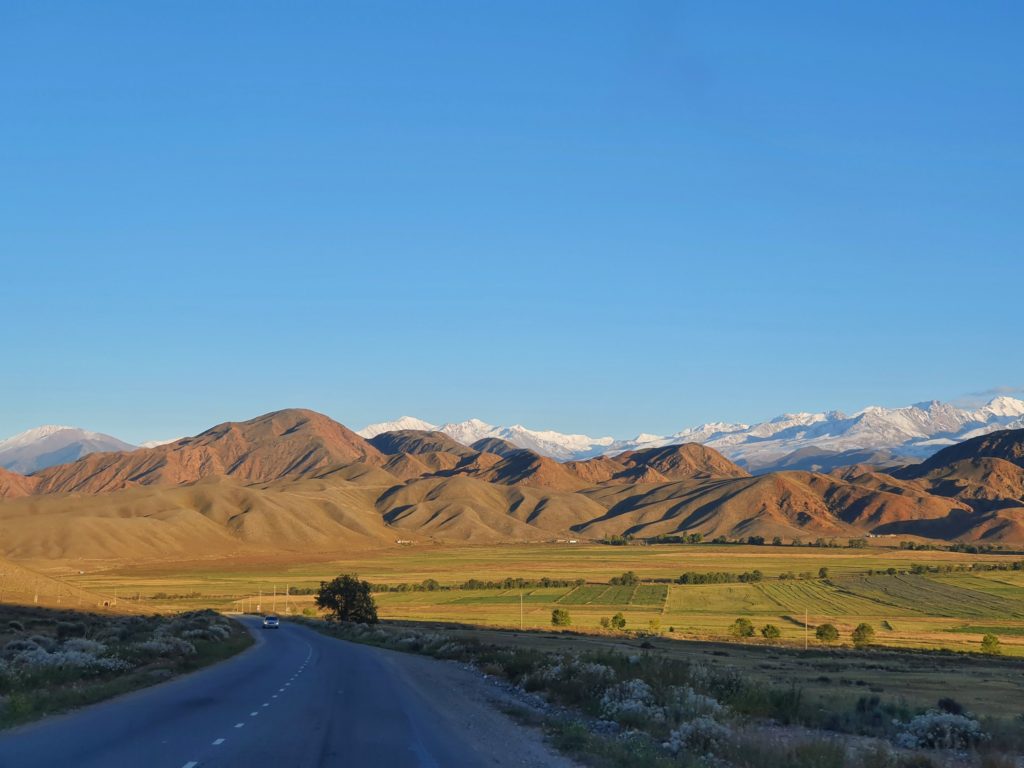
On this first day we visited three places: Burana Tower, Konorchek Canyon and the Orto-Tokoy water reservoir. I found all places interesting, whereby I liked the canyon best.
If there is not enough time, the Burana Tower would be the best place to skip in my opinion. This tower, one of the oldest buildings in Central Asia, is especially exciting for people interested in history. Others would probably call it a tower in the middle of nowhere. However, the Burana Tower is only a 15-minute detour from Bishkek to Lake Issyk-kul. Therefore, I would not call making a stop there wasted time.
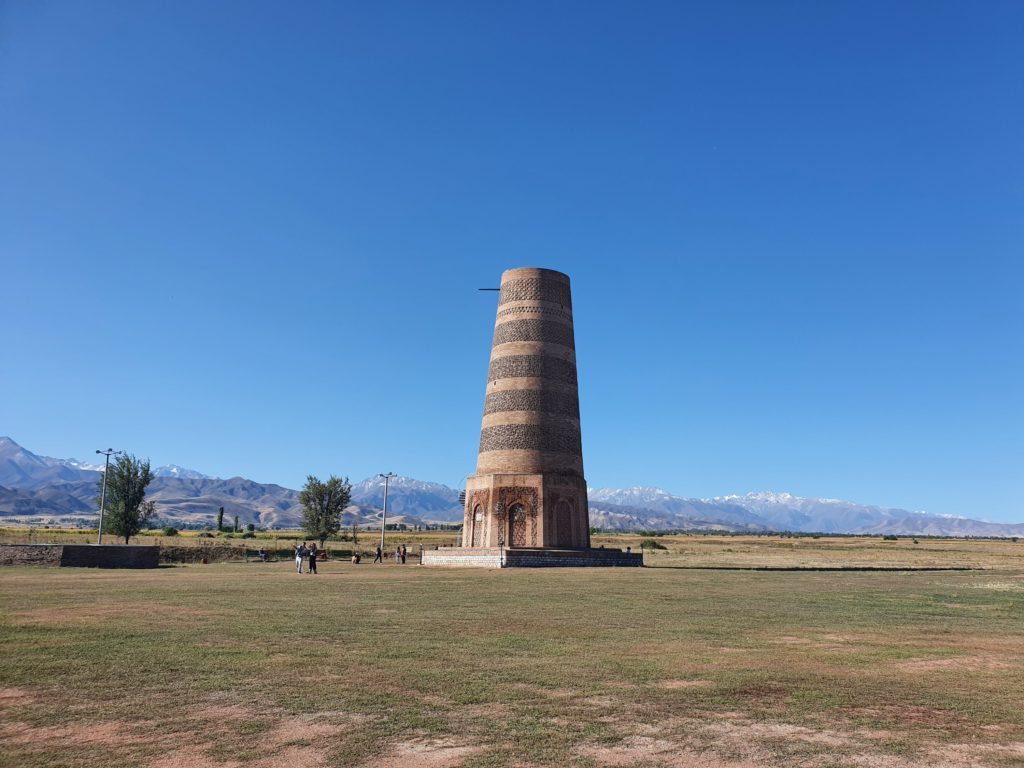
It took a good hour from Burana Tower to Konorchek Canyon, where we had to hike for about 45 minutes. During the hike you have to climb up and down some rocky barriers, some of them look pretty dangerous. In Switzerland, we would most likely have some kind of aids, such as ropes attached to the rocks, for such obstacles.
Here in Kyrgyzstan there is no such thing and I am pretty sure that this short hike has already led to some injuries. The tourist infrastructure in Kyrgyzstan is not really developed yet, which definitely gives the country an adventurous character as for example Switzerland. Fortunately, the brave will be rewarded with a wonderful view and the bonus of probably being the only person at the canyon.
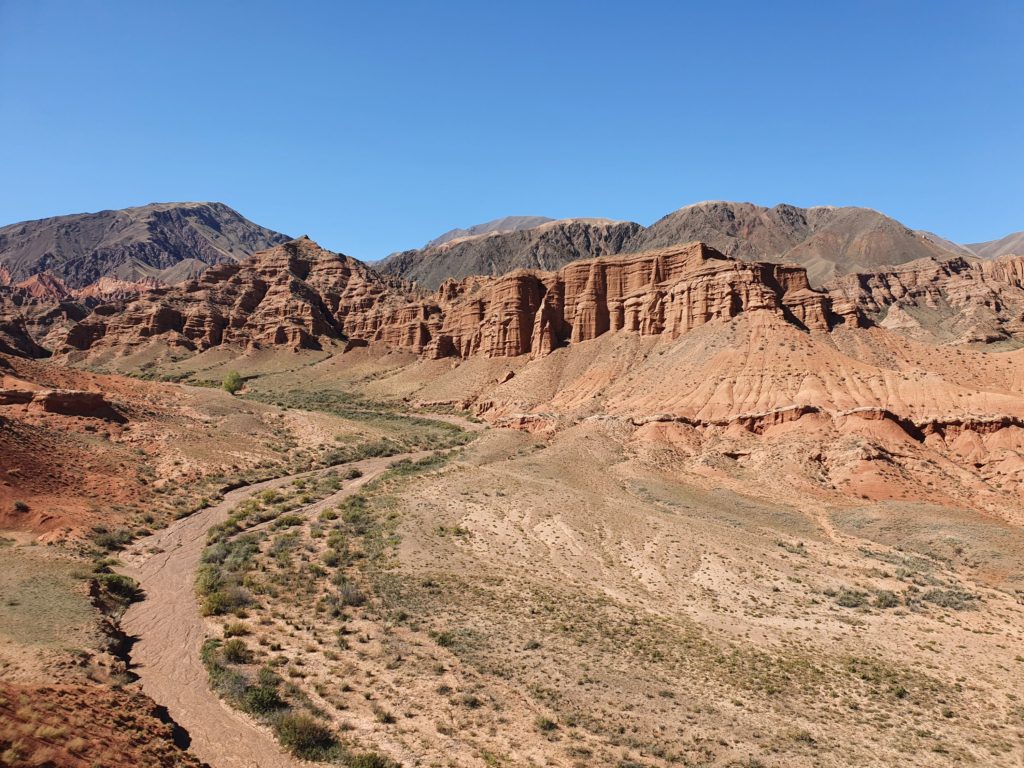
The third place we visited was the Orto-Tokoy water reservoir that has a few excellent viewpoints as well. From the top you can see the reservoir plus many animals (horses, sheep, cows etc.) grazing beside the water. Apparently, there is even a herd of camels somewhere around the reservoir that you might run into.
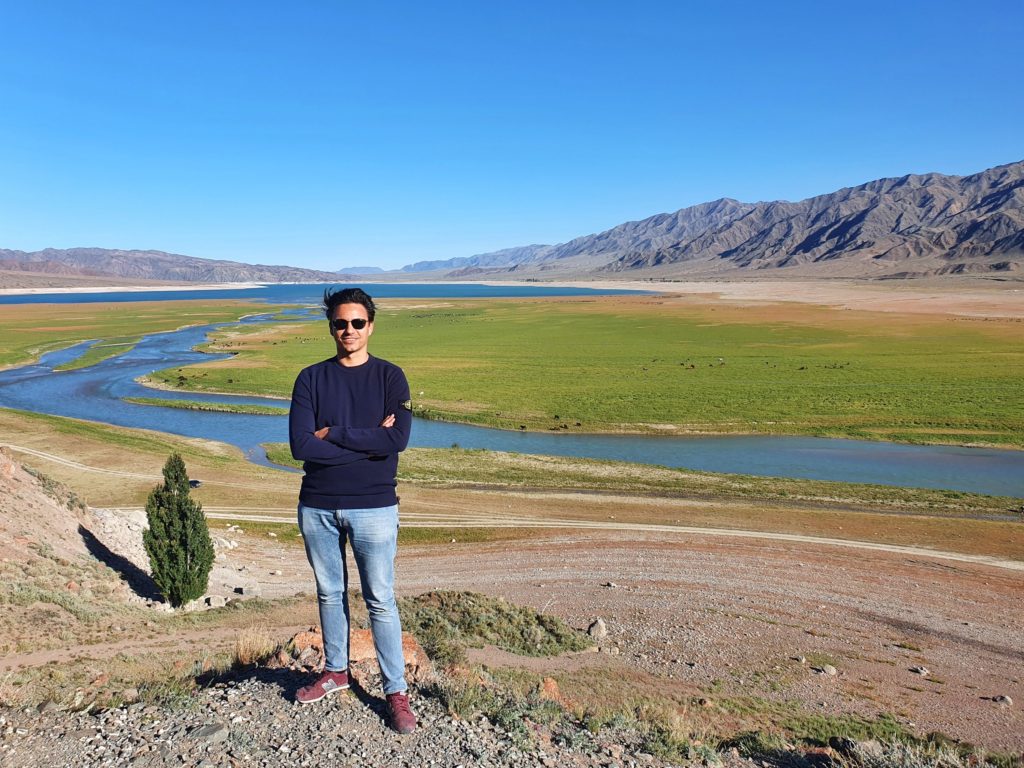
While we took some pictures above the reservoir, some domestic tourists joined us. The men asked me to take a group photo with them and one of them seemed to be excited that I was from Switzerland, as he was a big fan of Xherdan Shaqiri and Michael Federer (sic!). The young man was dead drunk and offered me a sip of his vodka cup, which I declined with thanks, referring to the pandemic.
Although Kyrgyzstan is a Muslim country, Russian influences cannot be denied. Or in other words: Kyrgyz people like to drink! Apparently, a vodka with 70% alcohol is very popular among the Kyrgyz. Fortunately, I didn’t have to try it during the trip. Anyway, Kyrgyzstan seems to me to be a quite liberal country, where traditions are important, but religion is rather lived out in the background.
Shortly before sunset we reached a family run yurt camp on the coast of Lake Issyk-kul. Narynbek gave me the choice before the trip whether I would rather sleep in a traditional yurt or in a guesthouse. For me the yurt was a no-brainer.
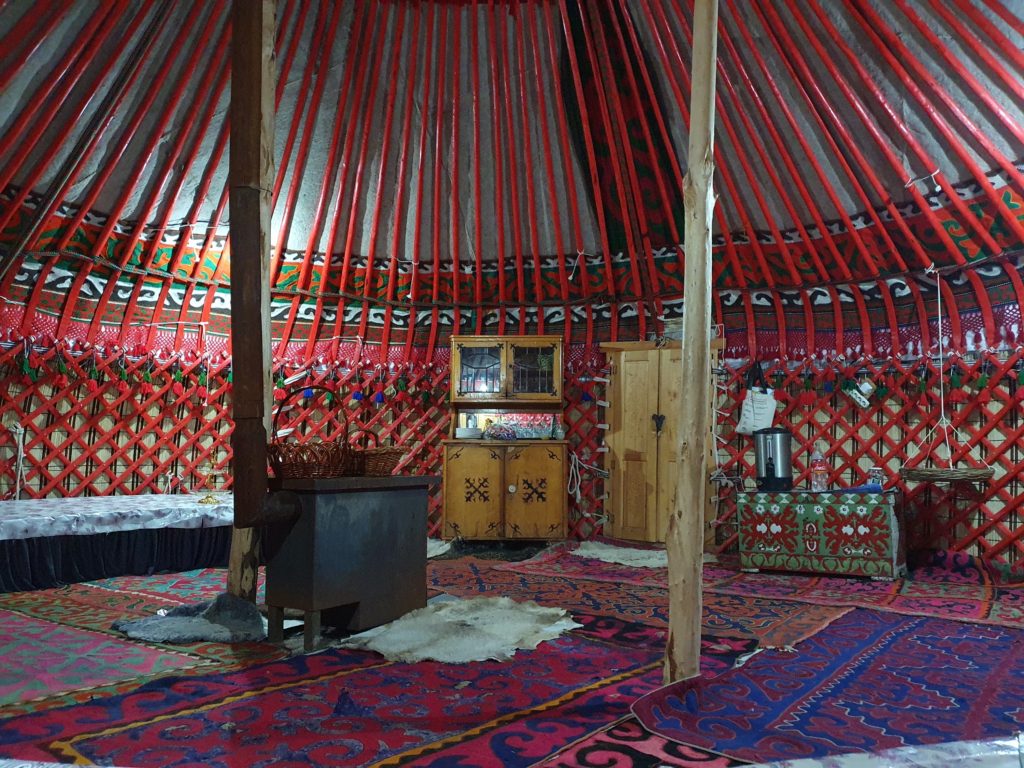
The dinner that the owner cooked herself was delicious and distracted a bit from my worries about COVID-19. Of the ten countries I visited so far during the pandemic, Kyrgyzstan had by far the least stringent measures. Actually there were no measures at all. No social distancing, no masks and a lot of handshaking. In addition, I noticed that almost every third person in the country was coughing.
When I had booked this trip, I did it also because of the official COVID numbers in Kyrgyzstan. It looked as if the country had the pandemic quite under control. Only shortly before my departure I learned that the official numbers were most likely much lower than the real numbers. When I mentioned my concerns, the owner of the camp offered me some vodka shots, “as it would kill the virus”.
After sunset at the latest, I doubted whether spending the night in a yurt was a wise decision. It was unbelievably cold. Three days before my arrival in Kyrgyzstan it was still 30°C at home. Here on the coast of Lake Issyk-kul it had probably a maximum of 10°C. In combination with the wind it felt like deepest winter. And so I fell asleep in a thick sweater and under three woolen blankets… it was a freezing night.
Crazy Kyrgyz sports and incredible nature
It was about 9 o’clock in the next morning when we had an appointment with a father and his two sons on the shore of the lake. It was time for a performance I was looking forward to the most during this trip: eagle hunting.
The older son took an eagle with a face mask covering his eyes out of the trunk of their car. The blind eagle screamed as if he was about to be executed and only calmed down when the son removed the face mask. Then it was his turn to perform.
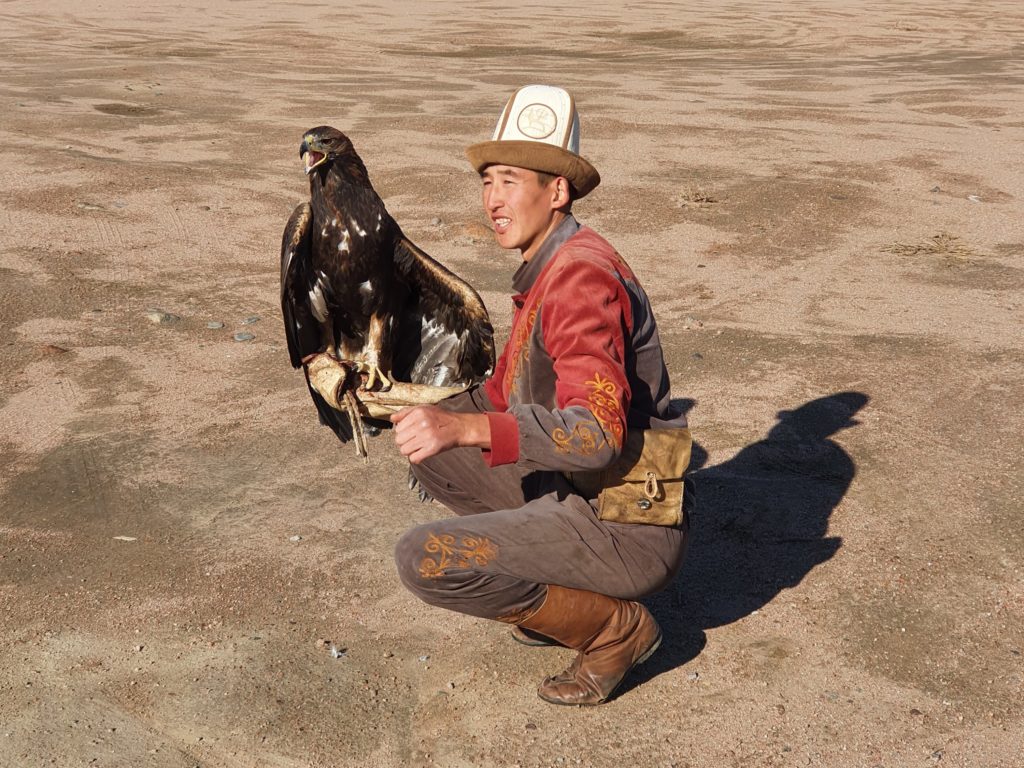
The older brother left with the eagle to a hill nearby. Then the younger brother ran away with a fox fur, which he pulled on a rope behind him, and the eagle was sent on a fox hunt. A few seconds passed and then the eagle had caught its “prey”.
In another round they released the eagle from the hill again, whereupon it flew onto the arm of the older brother below and was then fed with a dead parrot. The family catches most of the eagles shortly after they hatched and then trains them. After about ten years, the family sets the eagles free into the wild.
You can also see demonstrations like this at the World Nomad Games, one of Kyrgyzstan’s main tourist attractions. The World Nomad Games are a kind of Olympics among nomadic peoples. They took place three times in Kyrgyzstan and will be held in Turkey and Azerbaijan in the next few years.
One discipline of the World Nomad Games is also the national sport of Kyrgyzstan: Kok-boru. This sport is a kind of handball on horses. However, instead of a ball, the participants fight for a beheaded goat, which they have to throw into the goal of the opponents. For me, this is pretty much the craziest national sport I have ever heard of.
We didn’t see a decapitated goat that day, but we did see unbelievably beautiful nature. On our way to Karakol, Kyrgyzstan’s fourth largest city on the east coast of Lake Issyk-kul, we visited Skazka Canyon, Barskoon Gorge and Jeti-Oguz.
Having seen Konorchek Canyon the day before, I was not sure how much sense it would make to see a second canyon the day after. Fortunately, I did not intervene when Narynbek suggested the itinerary, because the Skazka Canyon was incredible. In contrast to Konorchek Canyon, Skazka Canyon, also called fairytale canyon, is much smaller and does not require a hike.
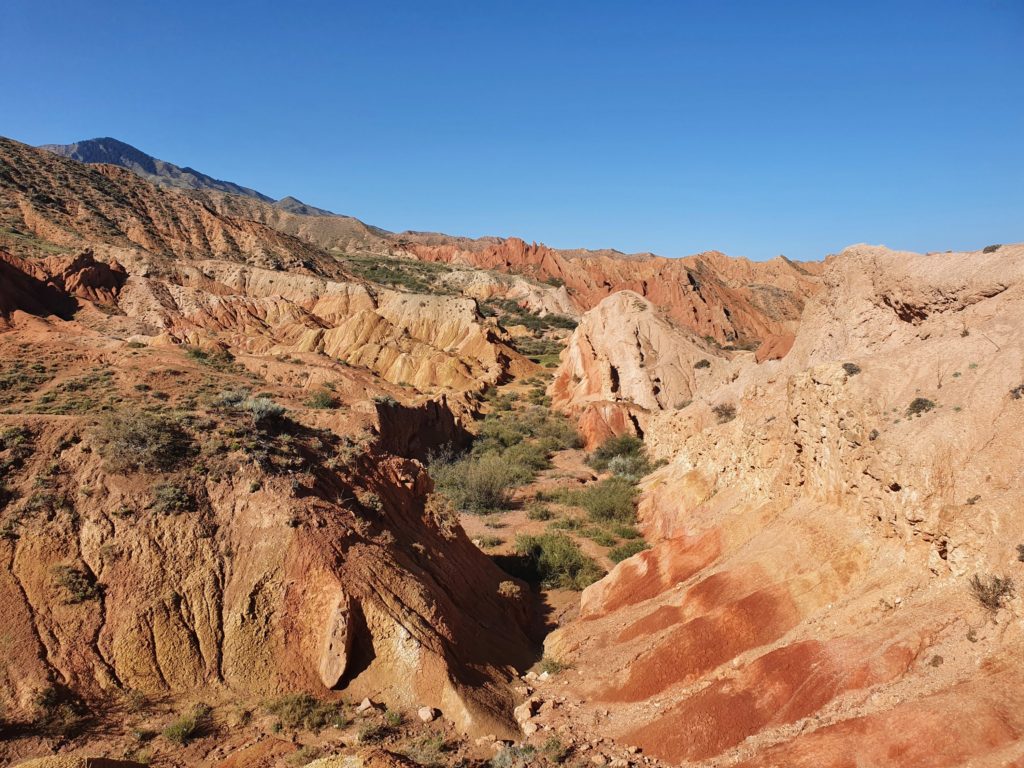
Skazka Canyon offers a colorfulness here, which I perceived as much more versatile than in the bigger canyon the day before. We spent about one hour at the canyon and climbed from stone to stone. Some tourists apparently come here to camp somewhere on the rocks. I found this place just magical.
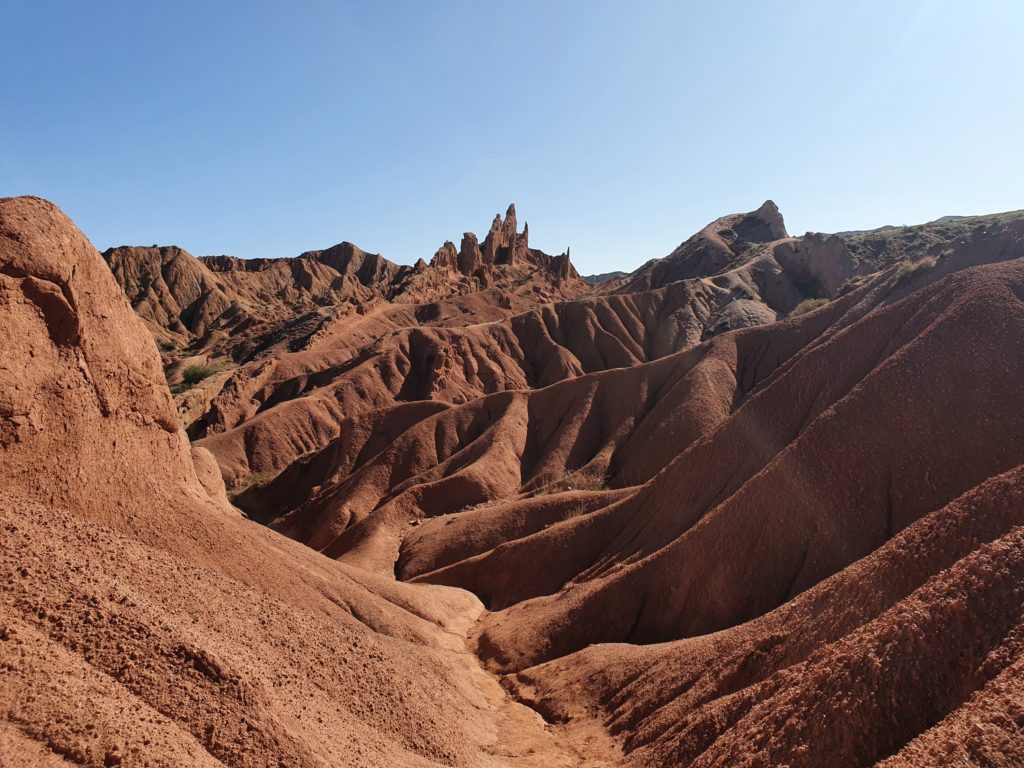
The other two places, Barskoon Gorge and Jeti-Oguz, could just as well be places in my home country. That means it had snow-covered mountains, forests, waterfalls and rivers. Well, maybe it will be difficult to find a monument of Yuri Gagarin, the first man in space, in Switzerland…
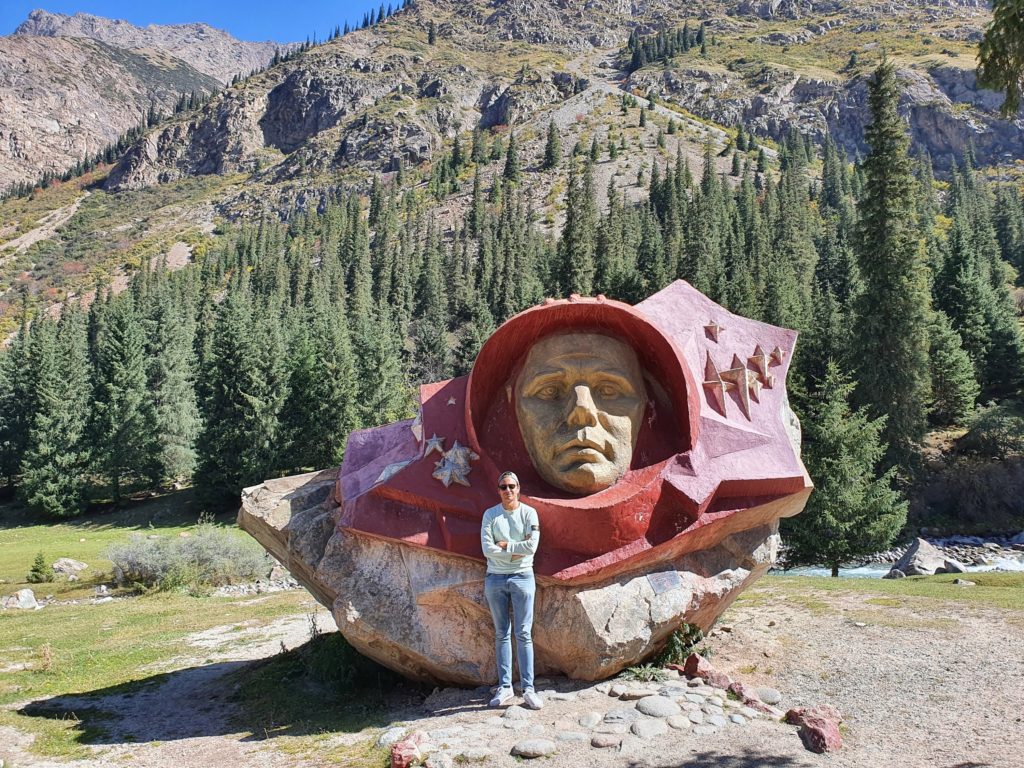
But otherwise the landscapes looked very similar and I think that travelers who enjoy countries like Switzerland, New Zealand or Canada will love Kyrgyzstan. After all, Kyrgyzstan is the still untouched, wild brother of these countries in terms of scenery. Plus, you don’t have to share the landscapes with hordes of other tourists (regardless of whether there is a pandemic or not).
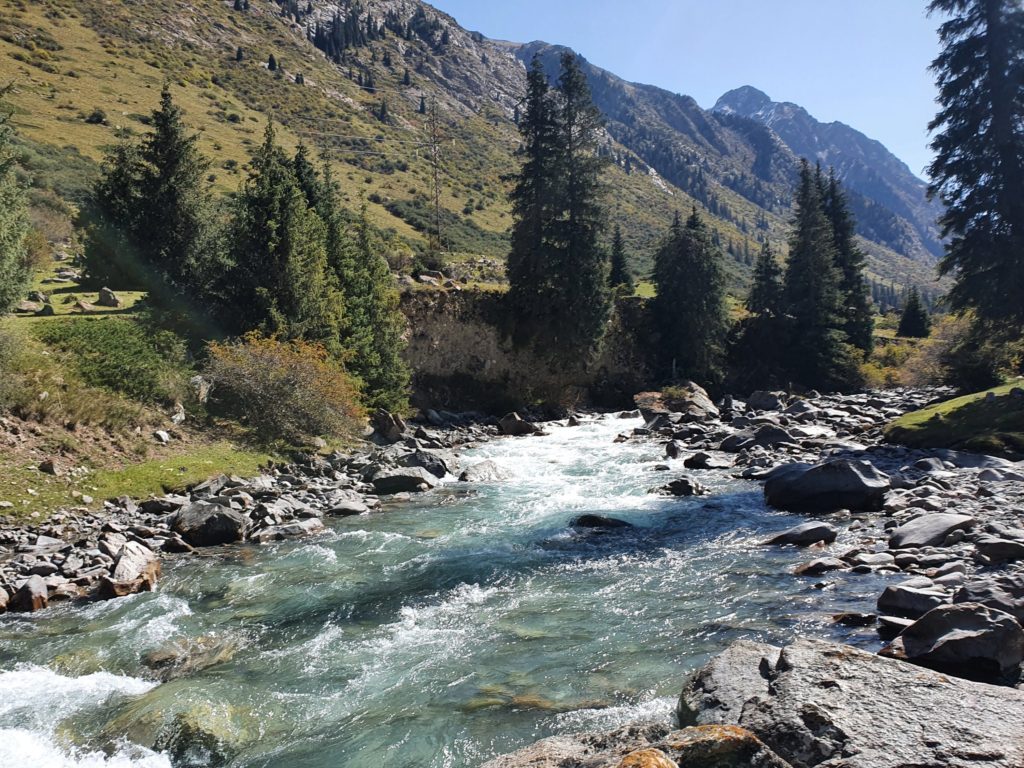
In Barskoon Gorge as well as in Jeti-Oguz we did some short hikes, which were very worthwhile because of the view. As I already wrote, I did not have the time for a multi-day hike in Kyrgyzstan. Therefore, these mini-hikes were a good compromise.
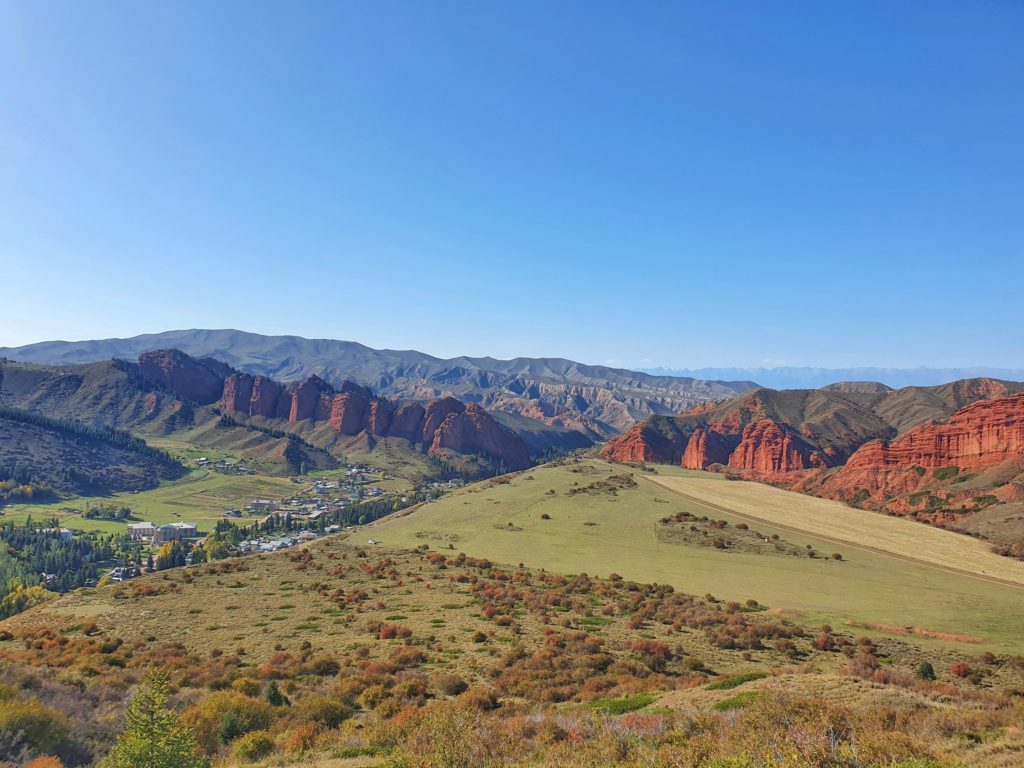
I was already a bit late for the peak travel season in Kyrgyzstan, which is in July and August. But June and September are still good months to travel the country. During my trip the lush green landscapes had almost disappeared, but the first autumn colors were already visible, which looked just as beautiful.
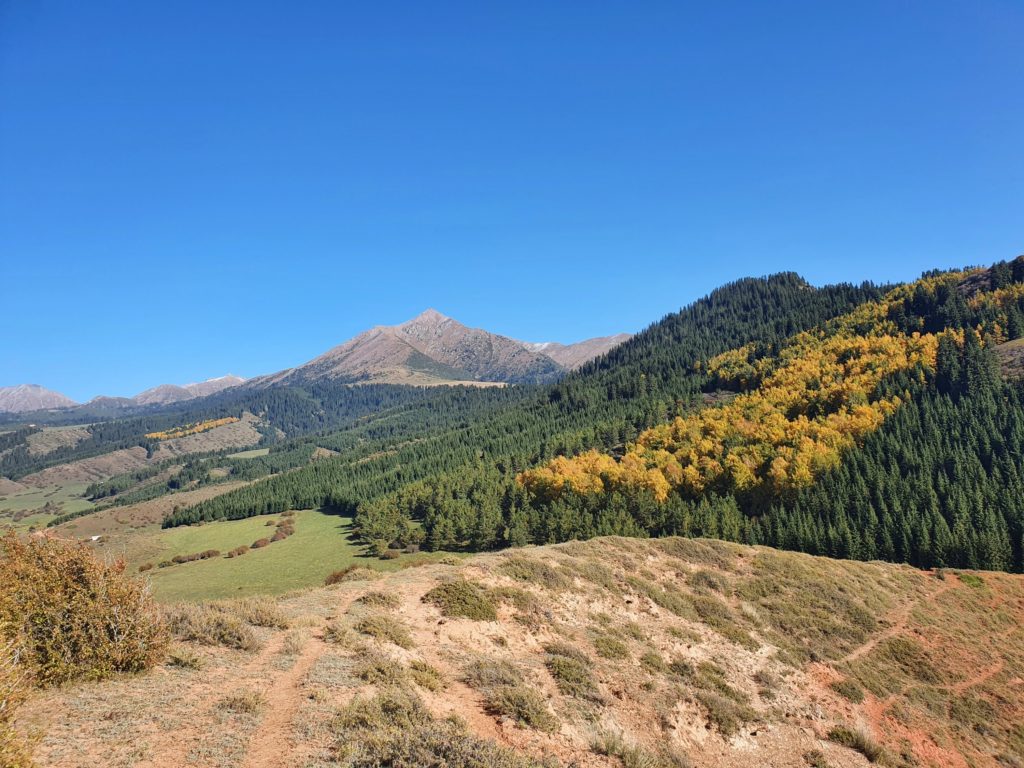
We reached Karakol just before sunset, where we stayed in a simple but comfortable guesthouse. This day was as fantastic as the day before and let me conclude what a great travel destination Kyrgyzstan is. In the meantime, Tomás, a traveler from Birmingham, joined the group. He arrived in Kyrgyzstan three days before me and was perhaps even the first international traveler since Kyrgyzstan reopened its borders (and I maybe the second).
Karakol to Chon-Kemin to Bishkek
After we had seen Karakol’s main attractions, the Holy Trinity Cathedral and the Dungan Mosque, the evening before, this day was dominated by a long drive back to the capital. However, no trip to Kyrgyzstan is complete without a horseback ride. This was our afternoon program of the last day.
The drive back to Bishkek was this time along the north coast of Lake Issyk-kul. In general, the north coast of the lake is the better destination for resort vacations, which are popular among Russian tourists. On the other hand, the south coast is more for adventure and eco-tourism. However, scenery-wise the drive back could not quite keep up with the south side of the lake.
We often drove only a few kilometers away from the border between Kazakhstan and Kyrgyzstan. Normally, I would probably have visited both countries on the same trip, but Kazakhstan is not open for tourist yet. That’s why, I only had the occasional view over to Kazakhstan, although it was not always clear where the border between the two countries exactly runs.
Our last stop before Bishkek was the Chon-Kemin National Park, which we reached in the early afternoon. Horses have a very high status for people all over Central Asia, which makes horseback riding a must when you are in Kyrgyzstan.
Kyrgyzstan was in fact my second country after South Africa where I rode a horse. There were some slight differences between the two countries, though… For example, wearing a helmet or any other protection seems to be quite overrated in Kyrgyzstan. The name Genghis Khan is still omnipresent in Kyrgyzstan and after all, he was not a pussy who wore a helmet. At least not without simultaneously holding a sword or bow and arrow in the hand.
And so we rode up the mountain on our rather spirited horses. The horses even seemed to be a bit uncomfortable with each other and sometimes became quite aggressive when they were too close. In the end, the risk of a hospital stay was worth the view we got when we reached the top.
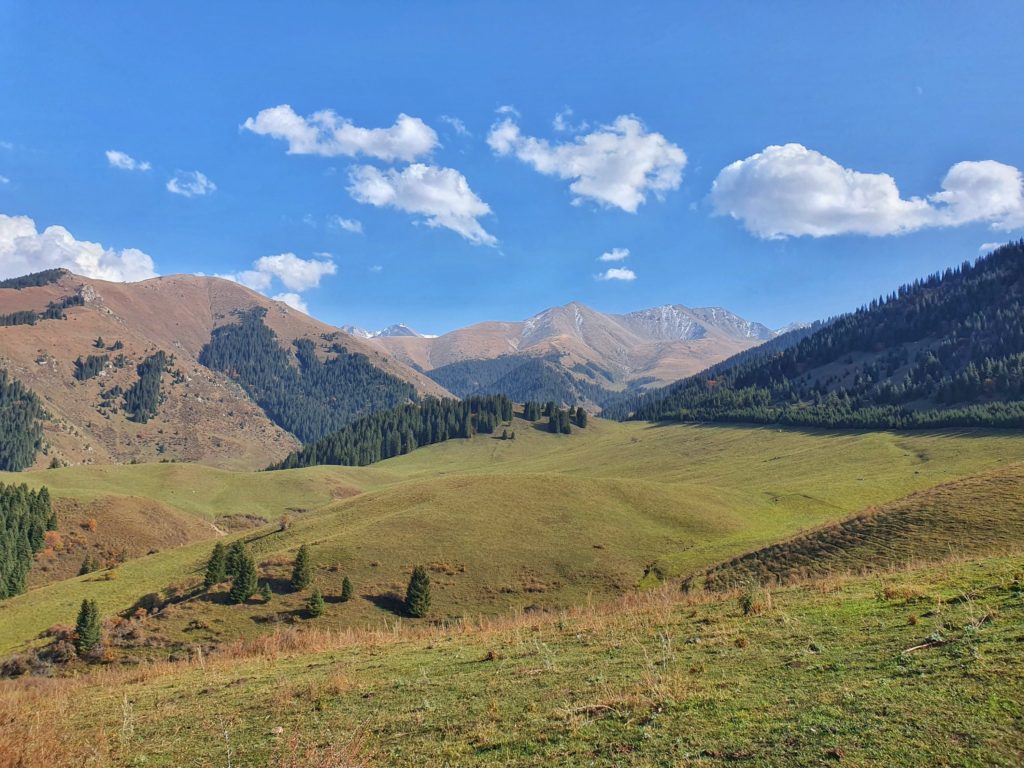
Any hippo would have looked better climbing down a three meter high rock than I did when I got off the horse. To be honest, I was glad that I did this activity, but I was not entirely unhappy that sitting on that stubborn horse was over after a good two hours.
The horseback riding was a worthy finale to this excellent trip, because we already arrived back in Bishkek two or three hours later. The trip was exhausting with long journeys in the car and little sleep, but in only a few days I saw many great places, met nice people and ate delicious food. For me personally it was the best trip so far this year.
Kyrgyzstan is a fantastic travel destination
If you think that New Zealand is too far away, Switzerland too expensive and Canada too ordinary, then Kyrgyzstan is the place for you! In contrast to these three countries, Kyrgyzstan is much wilder, though. That sometimes means adventurous traffic, drunk people plus totally strange sports. Wilder also means more fun and I am sure you would agree that a country with kok-boru as its national sport cannot be boring.
It can also happen that a stray dog walks into a hotel lobby or a flock of sheep blocks the road for several minutes. So if you find the above mentioned countries too ordinary, you will enjoy Kyrgyzstan very much.
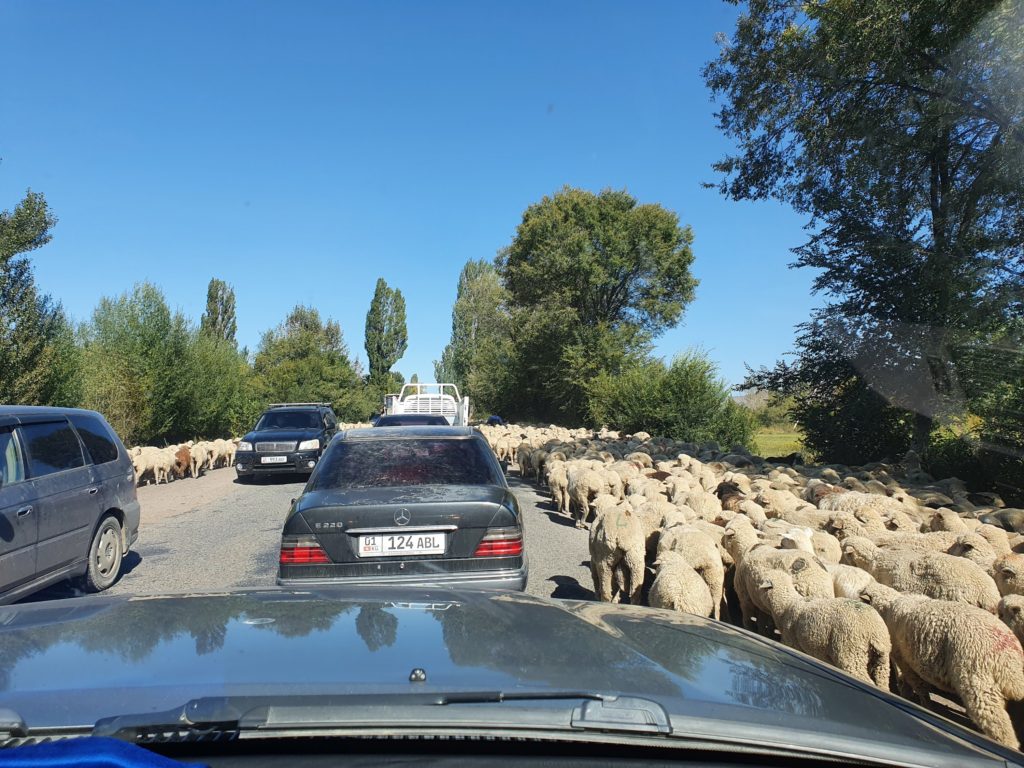
It goes without saying that Kyrgyzstan is a quite affordable travel destination. My tour cost a little more than $130 per day. This included transportation, food, accommodation outside of Bishkek and activities like horseback riding or eagle hunting. Of course, this trip can be done cheaper individually, but I feel that you can see and experience more with a tour guide than without one (again, I can highly recommend Kyrgyz Guides).
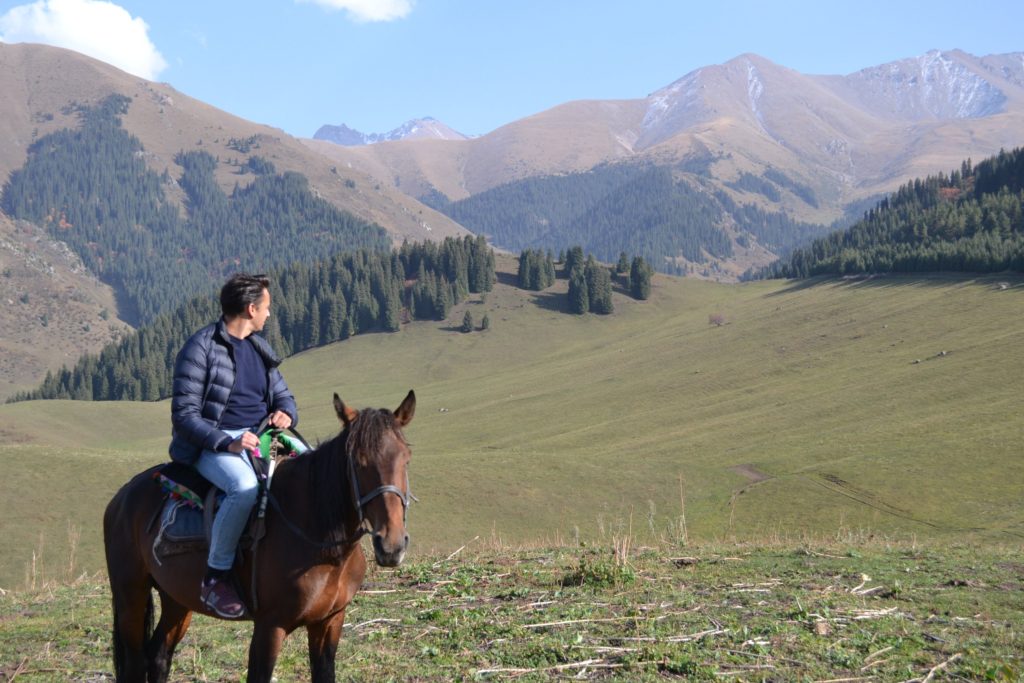
This first trip gave me a first impression, but Kyrgyzstan offers more than Lake Issyk-Kul. Osh, the second largest city in Kyrgyzstan, is located in the west of the country. Supposedly, it feels like another country compared to Bishkek. From there you can drive along the Pamir Highway to Dushanbe, the capital of Tajikistan. Something I would like to do one day.
What I really regret is that I spent so little time in the capital. I love cities and Bishkek would probably be interesting enough to spend one full day there. Unfortunately, I only had two evenings in Bishkek, but this strengthens my desire to travel to Kyrgyzstan at least one more time.
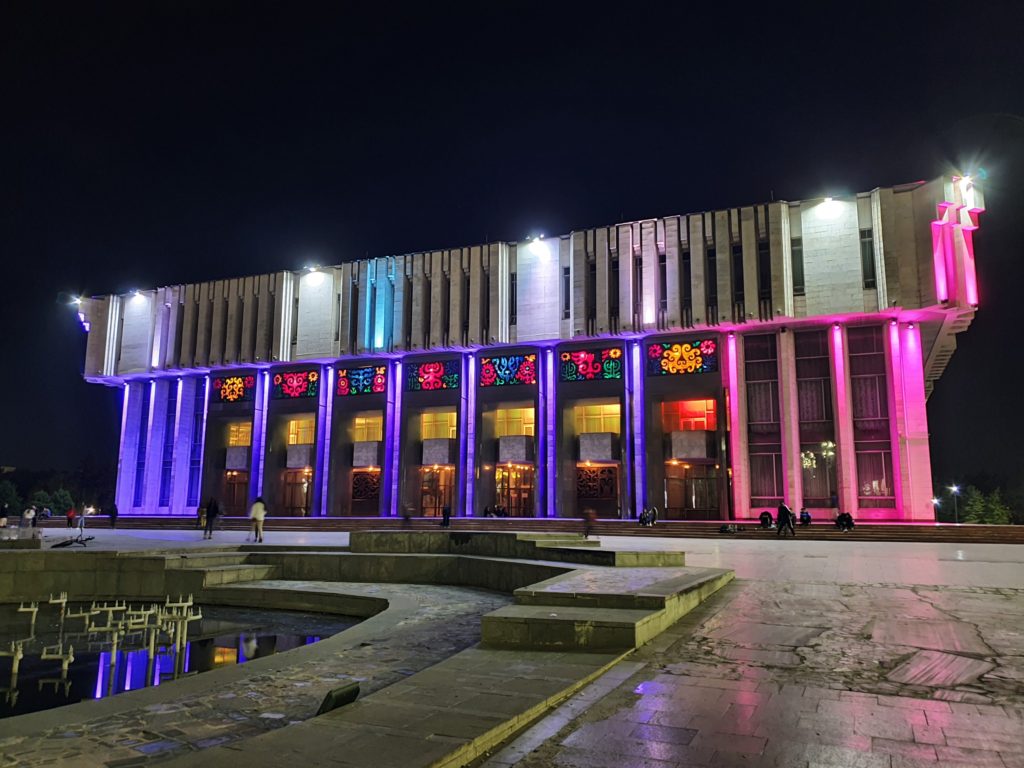
After Turkmenistan, Kyrgyzstan was my second trip to Central Asia (if you don’t count Afghanistan). Compared to Turkmenistan, perhaps the weirdest country in the world, Kyrgyzstan is of course completely different, much more open and with different landscapes. Also the other countries in this region, Uzbekistan, Tajikistan and Kazakhstan, are said to be again different and I can hardly wait to visit them. Because this region is one of most underrated travel destinations in the world.
In conclusion, I can say expectations of Kyrgyzstan were high and I knew that this trip would be cool. But I didn’t expect Kyrgyzstan to make it into my Top10 favorite countries. This short trip was great in every respect and I am positive that it wasn’t my last trip to Kyrgyzstan. Perhaps, I can even see kok-boru then…
